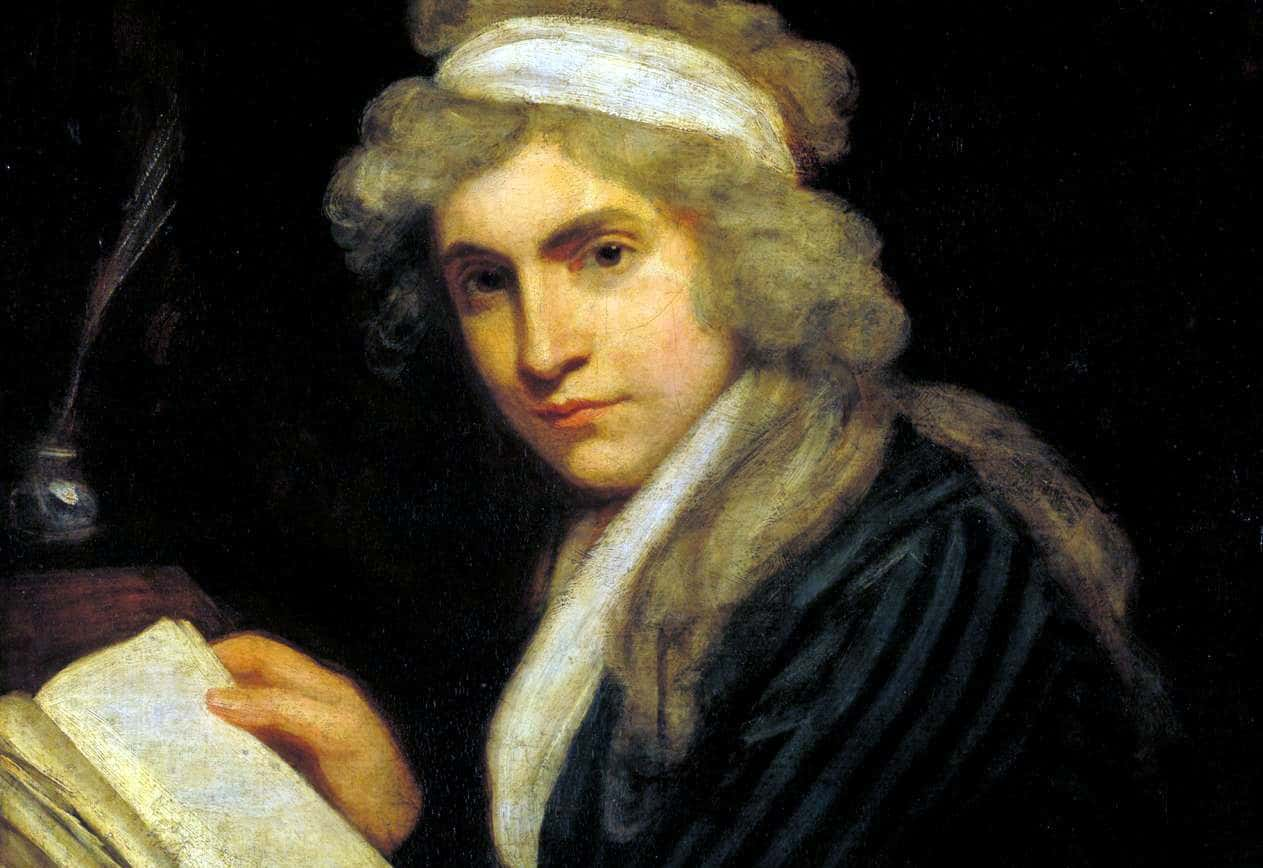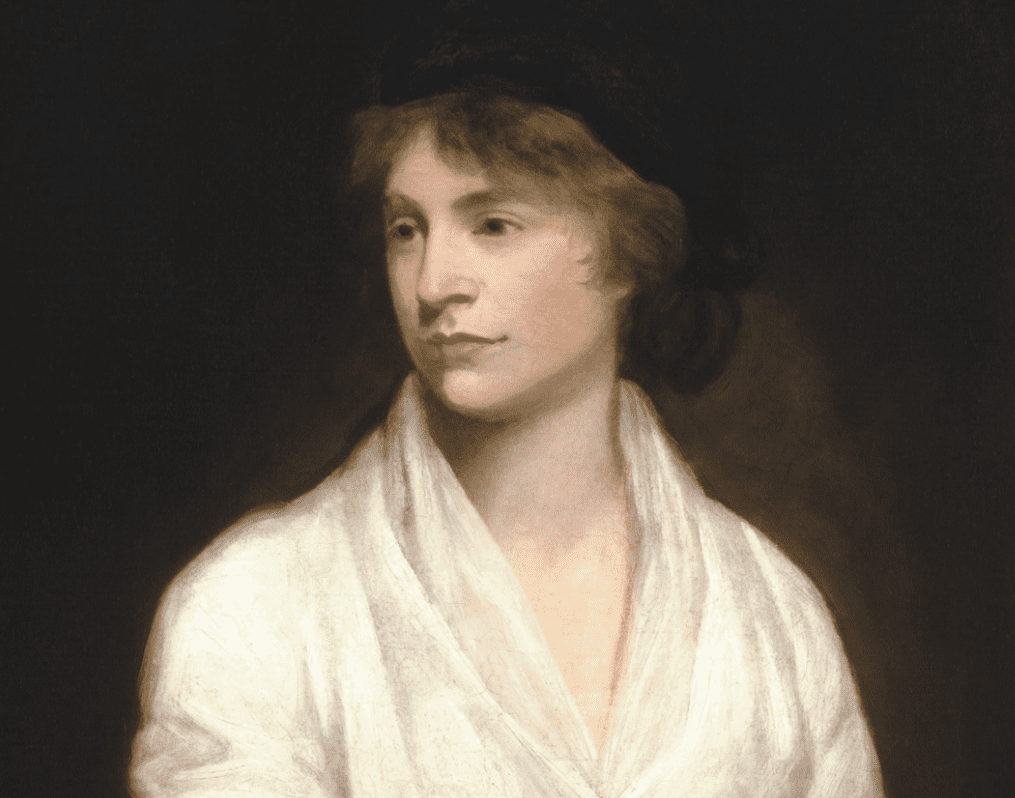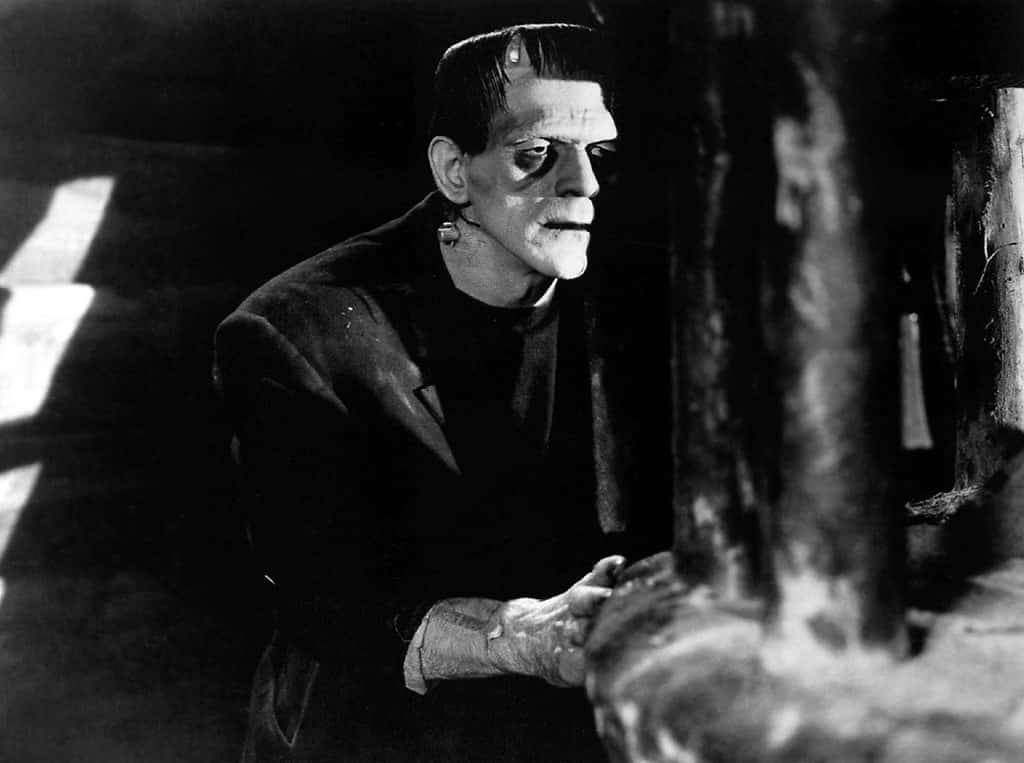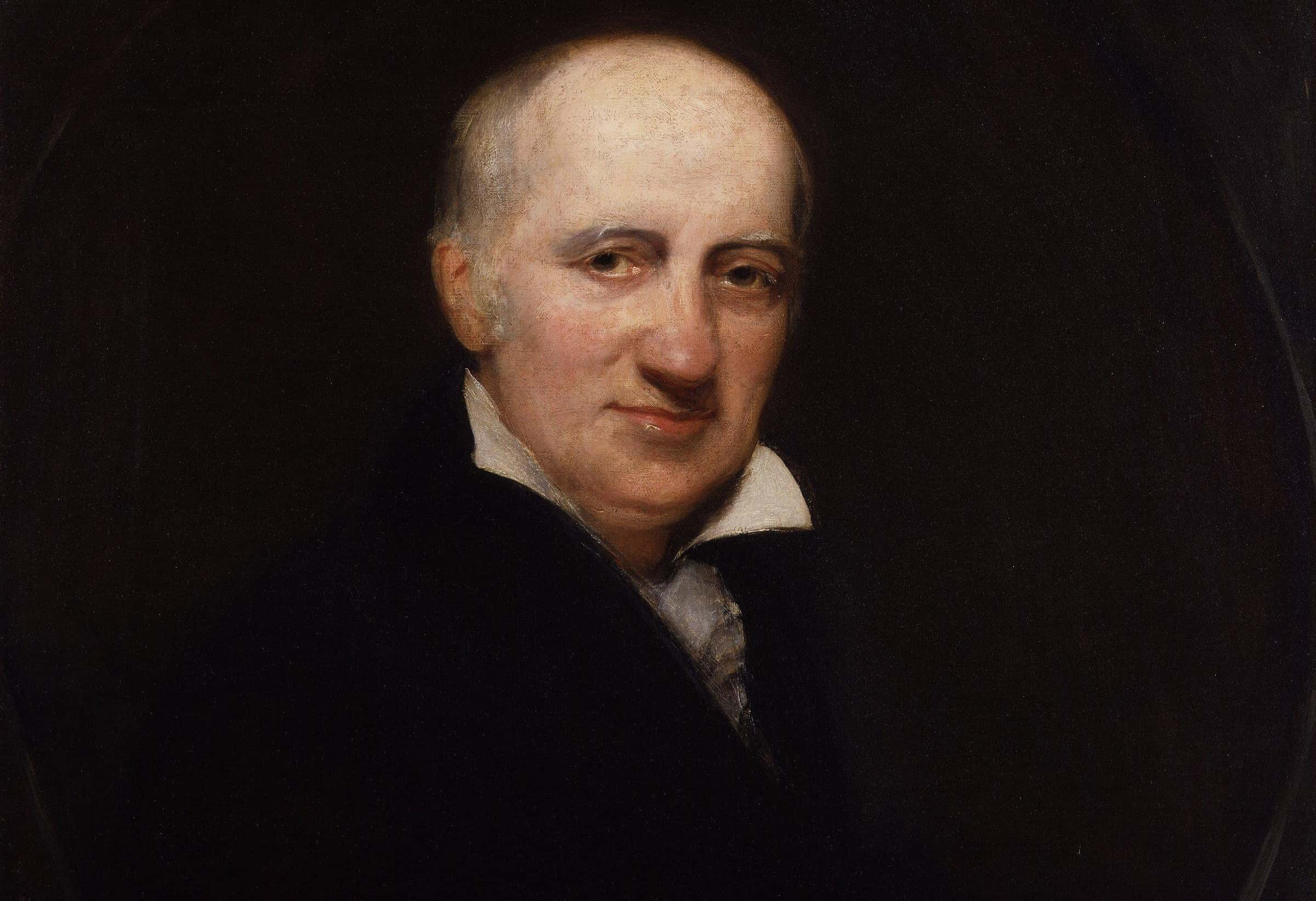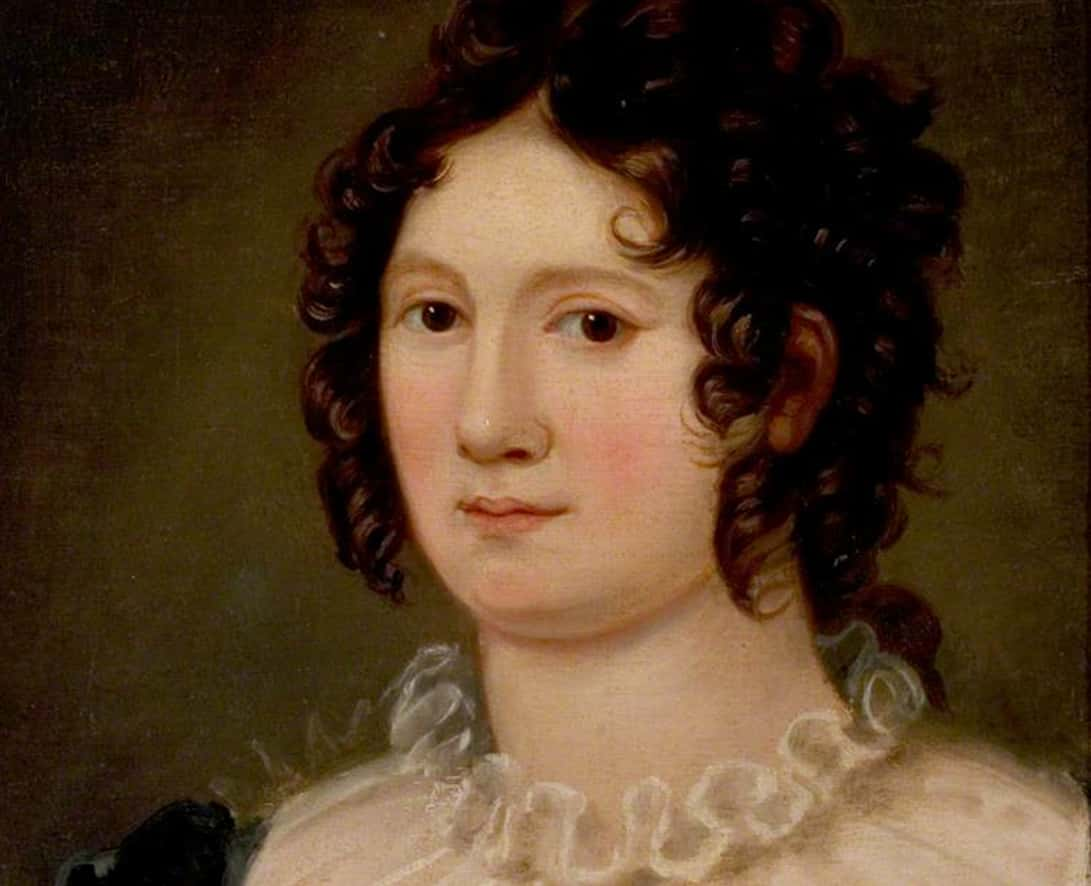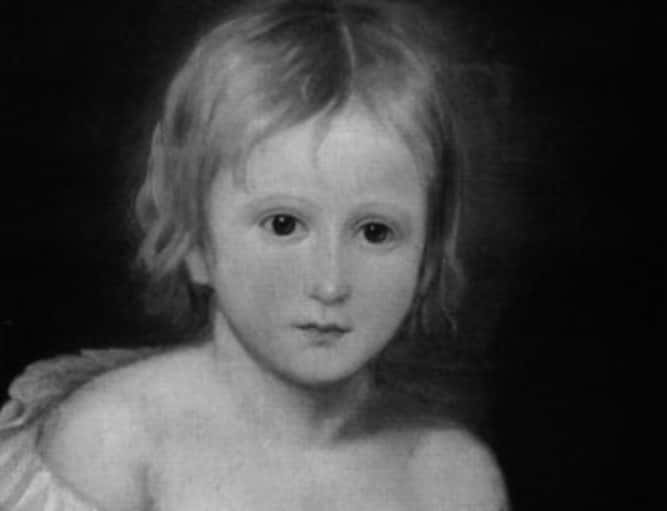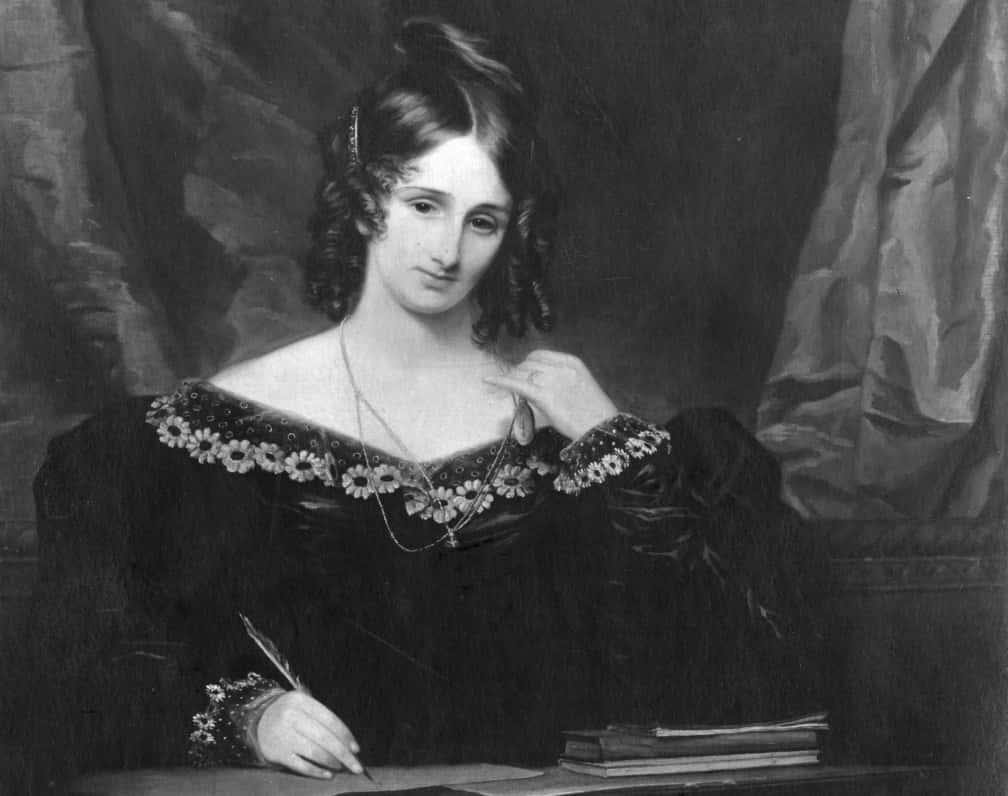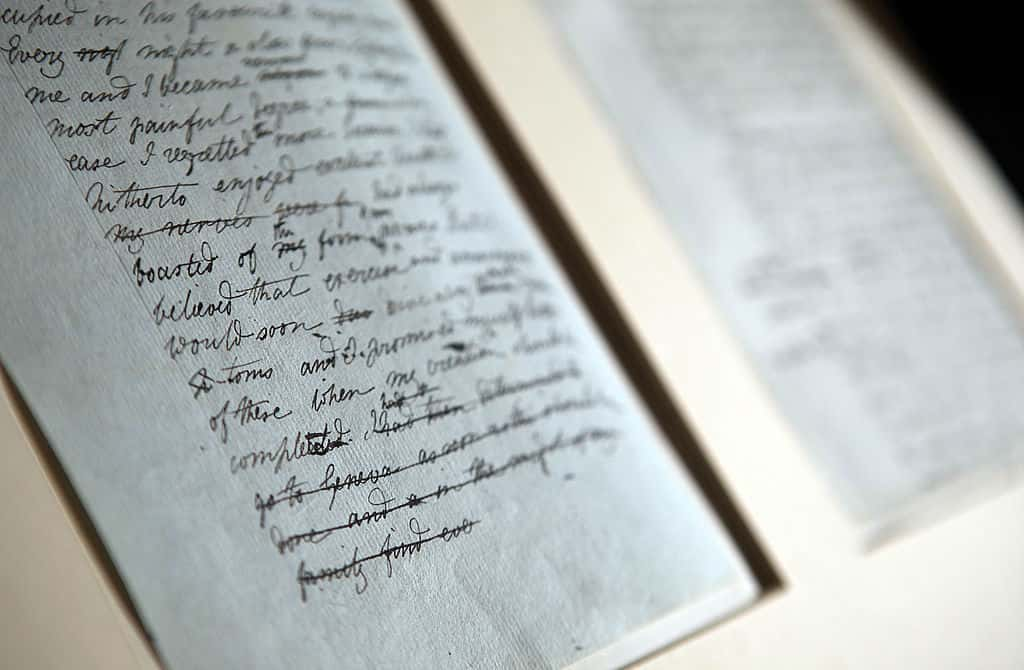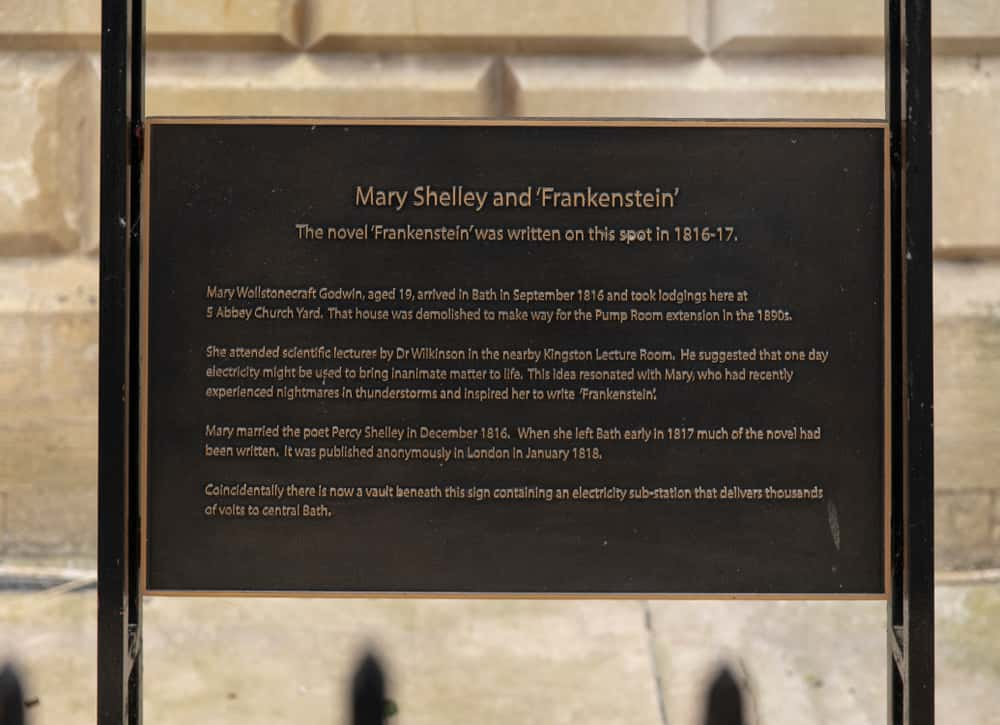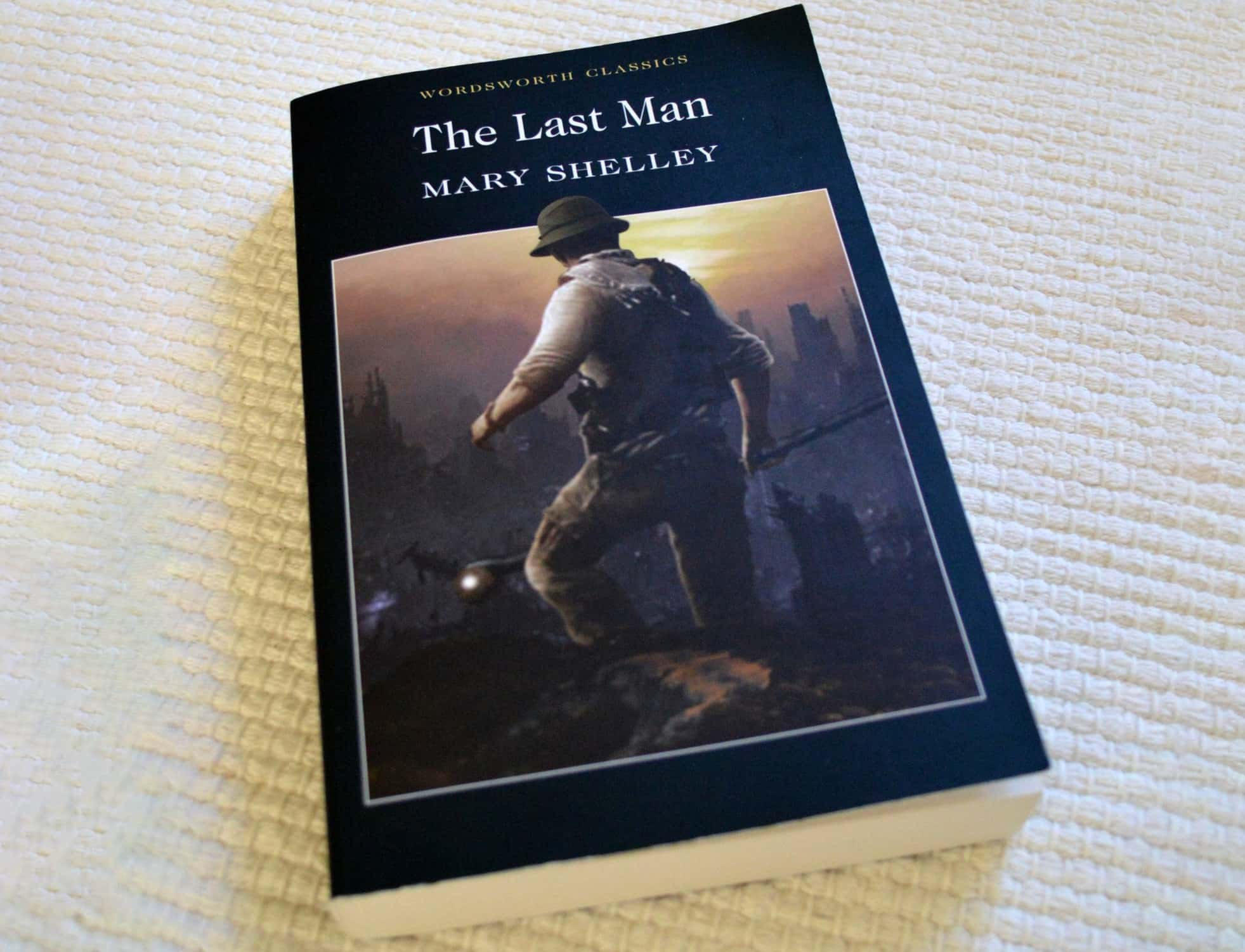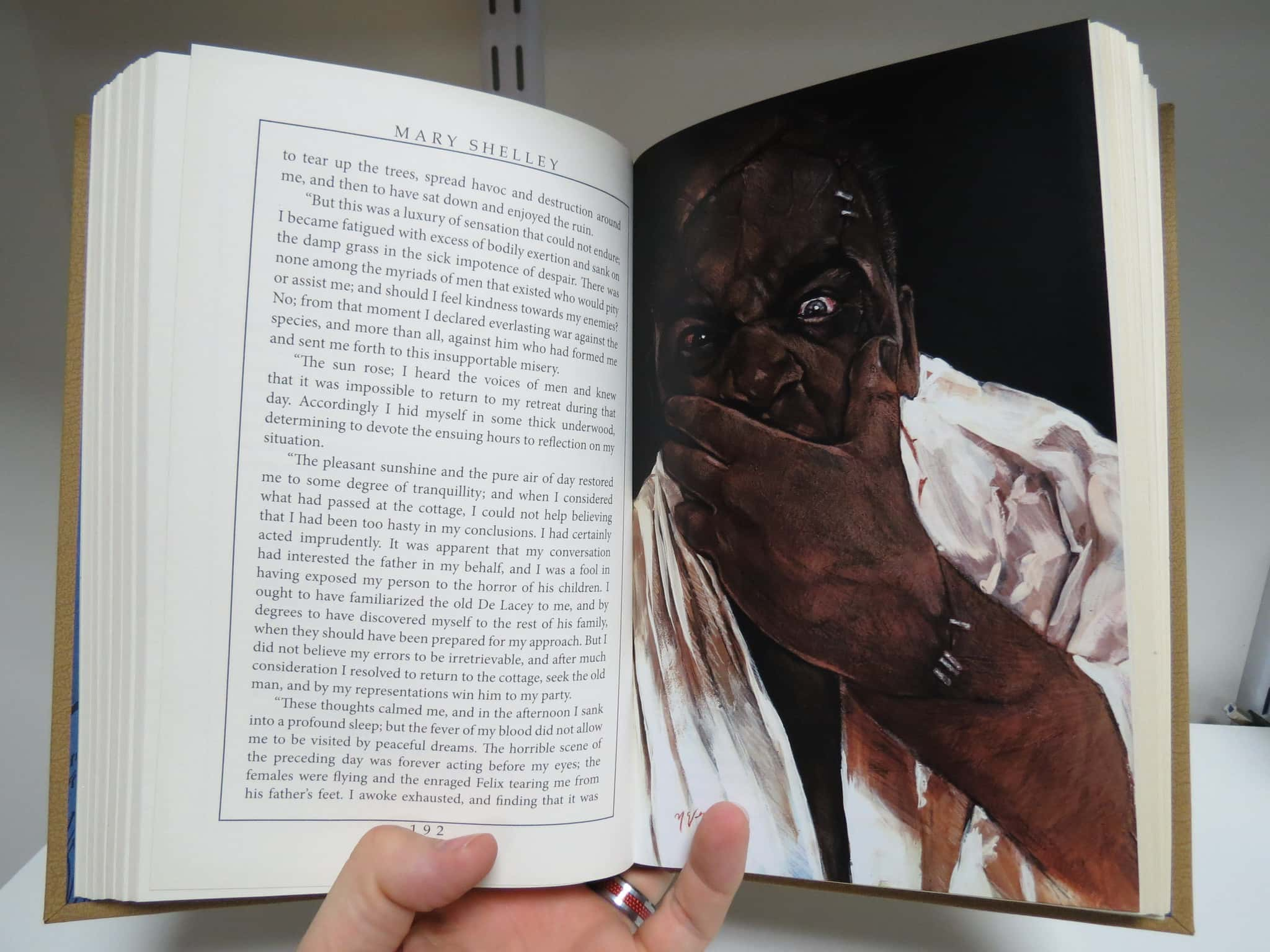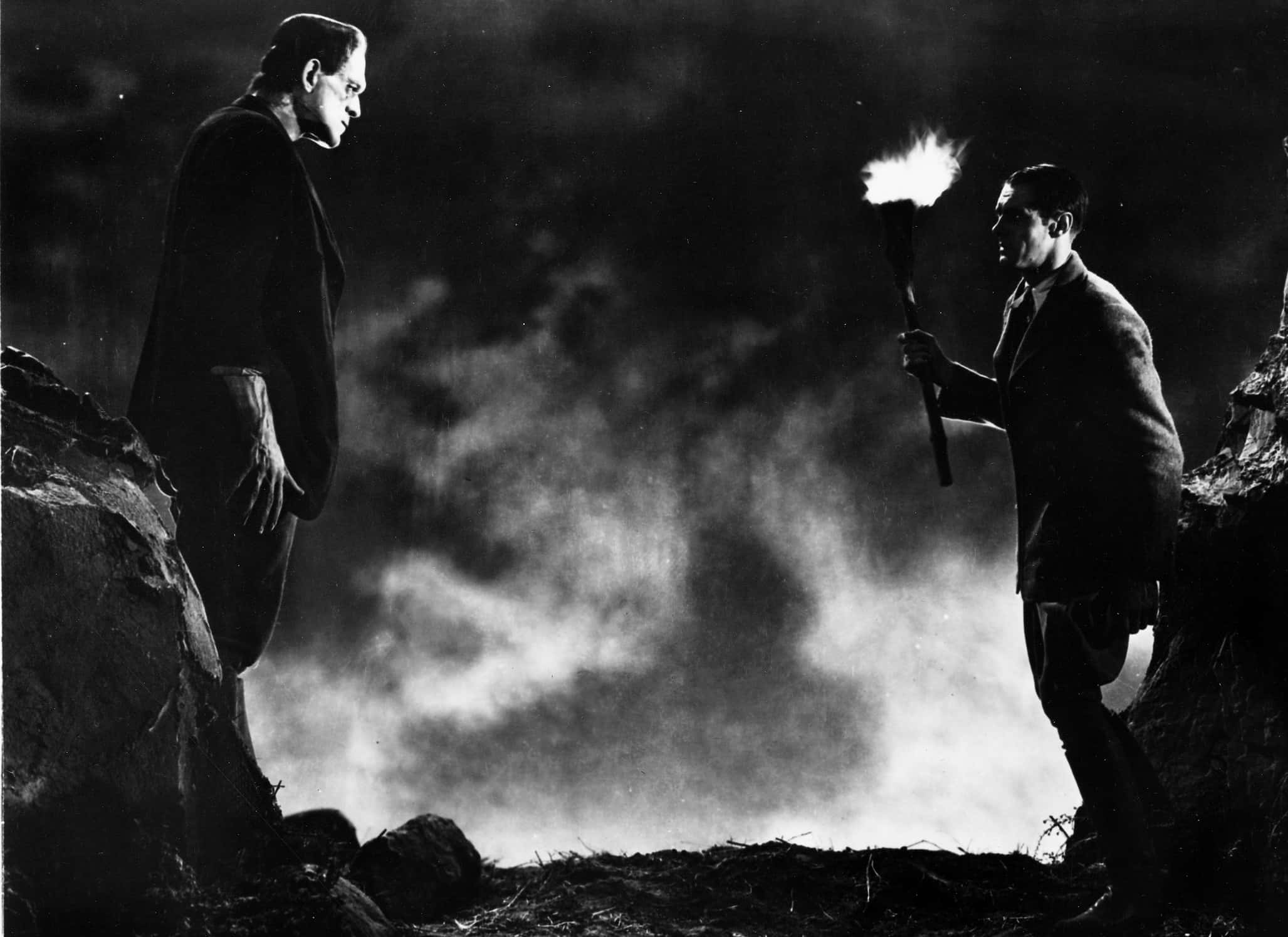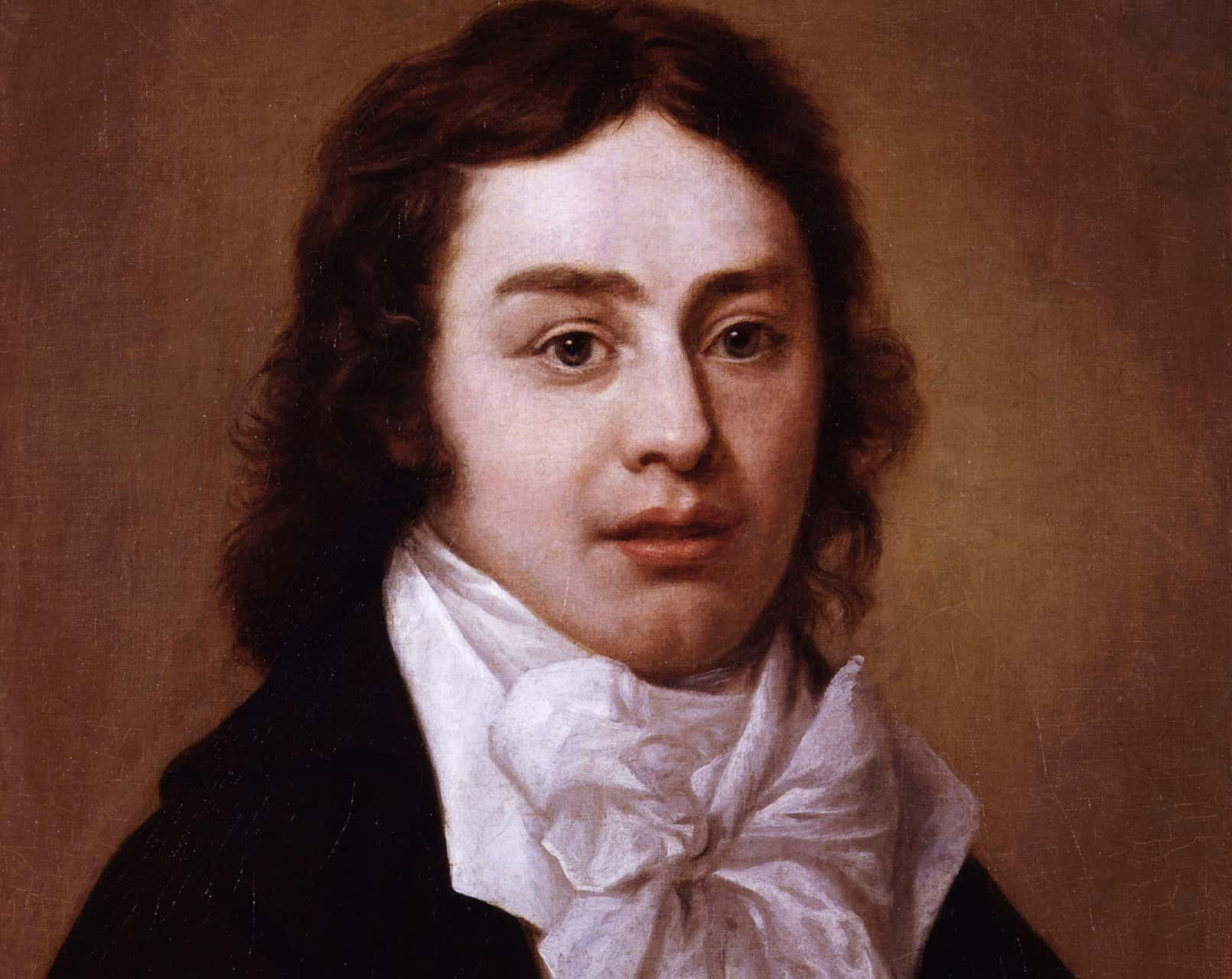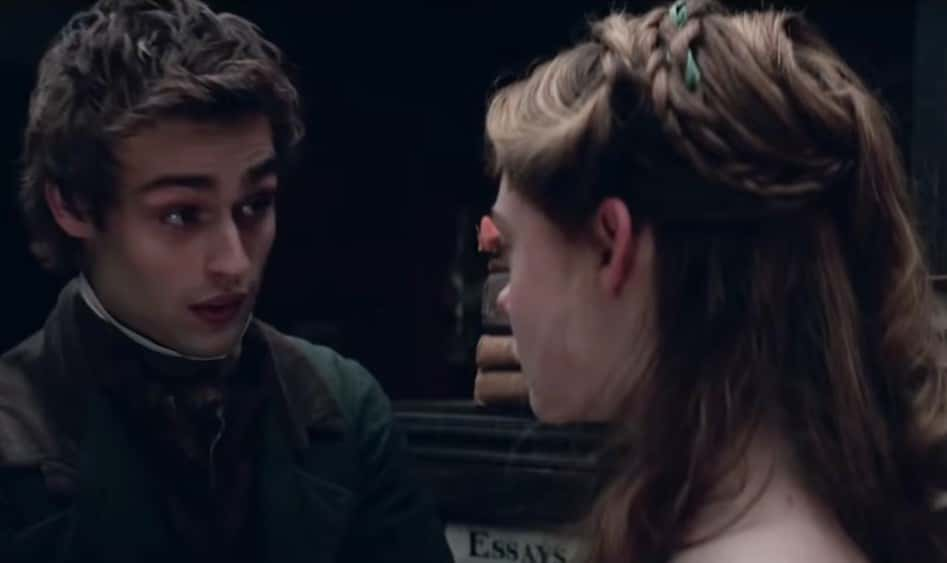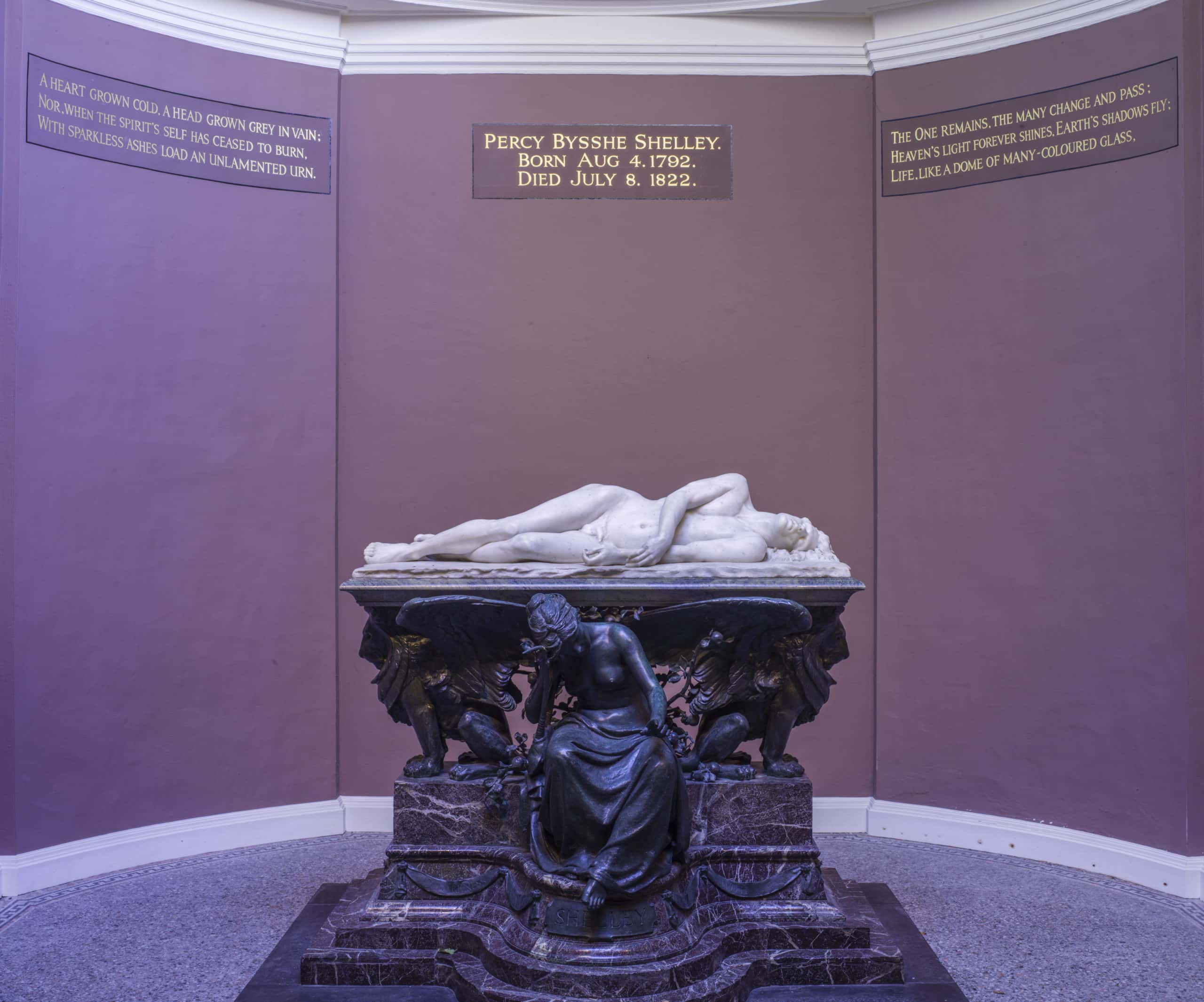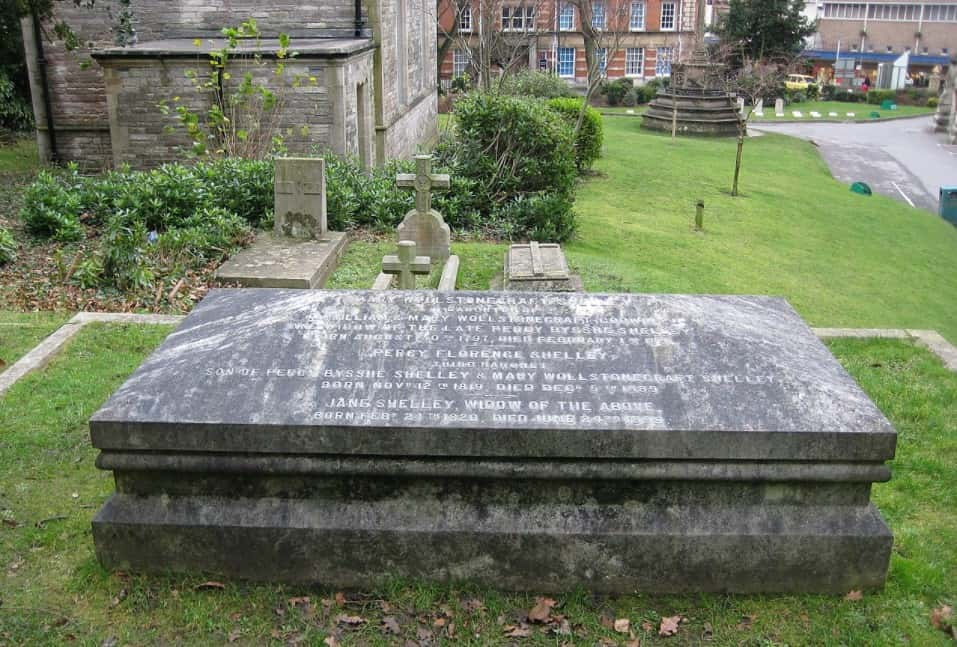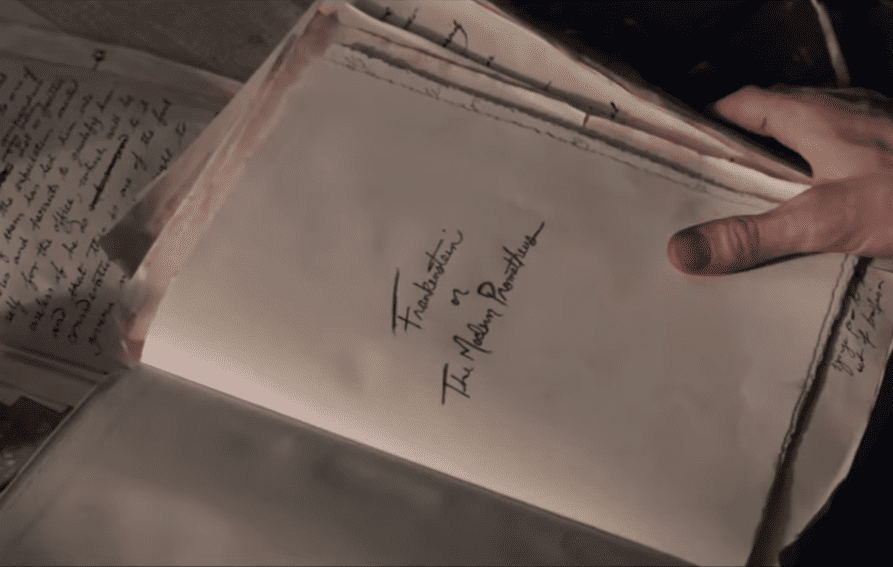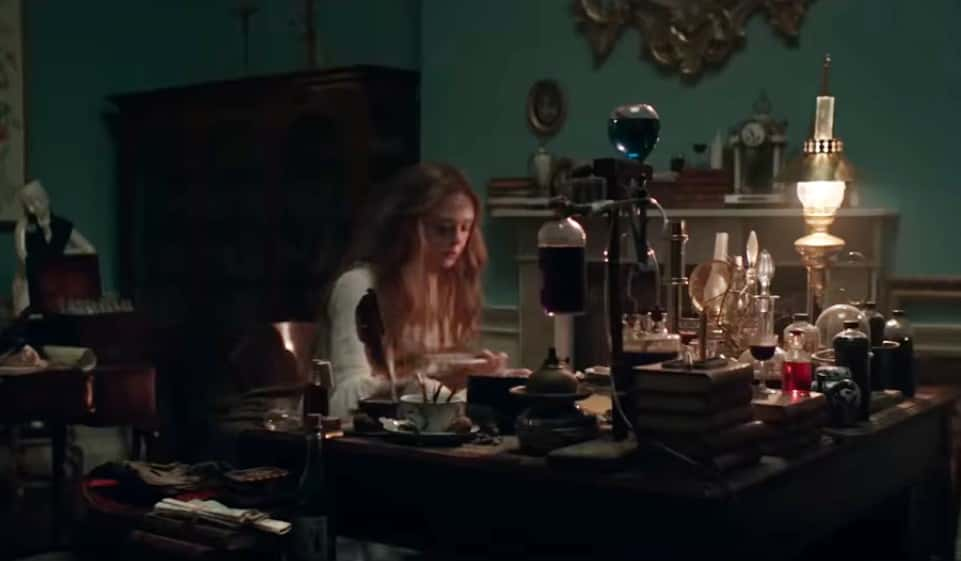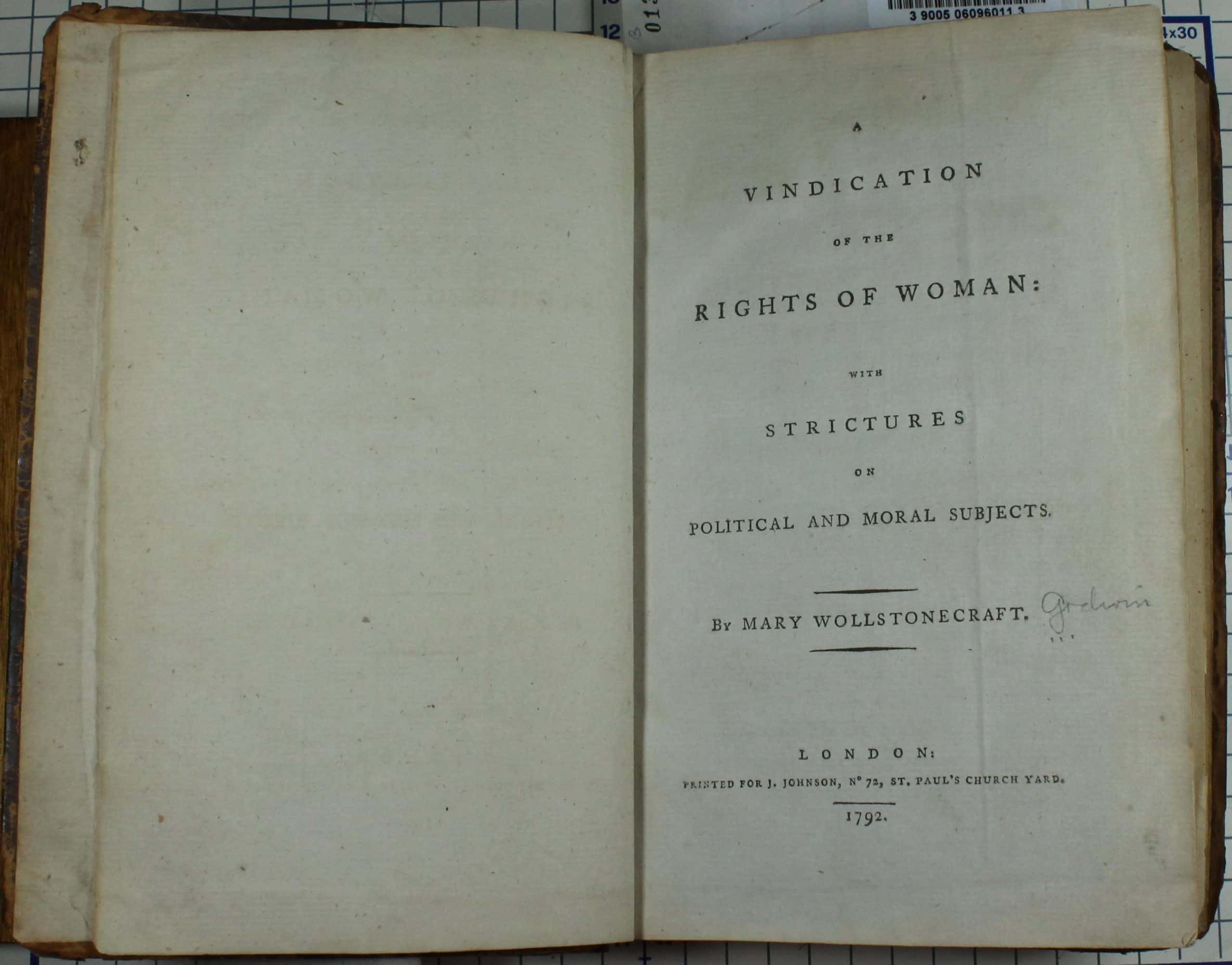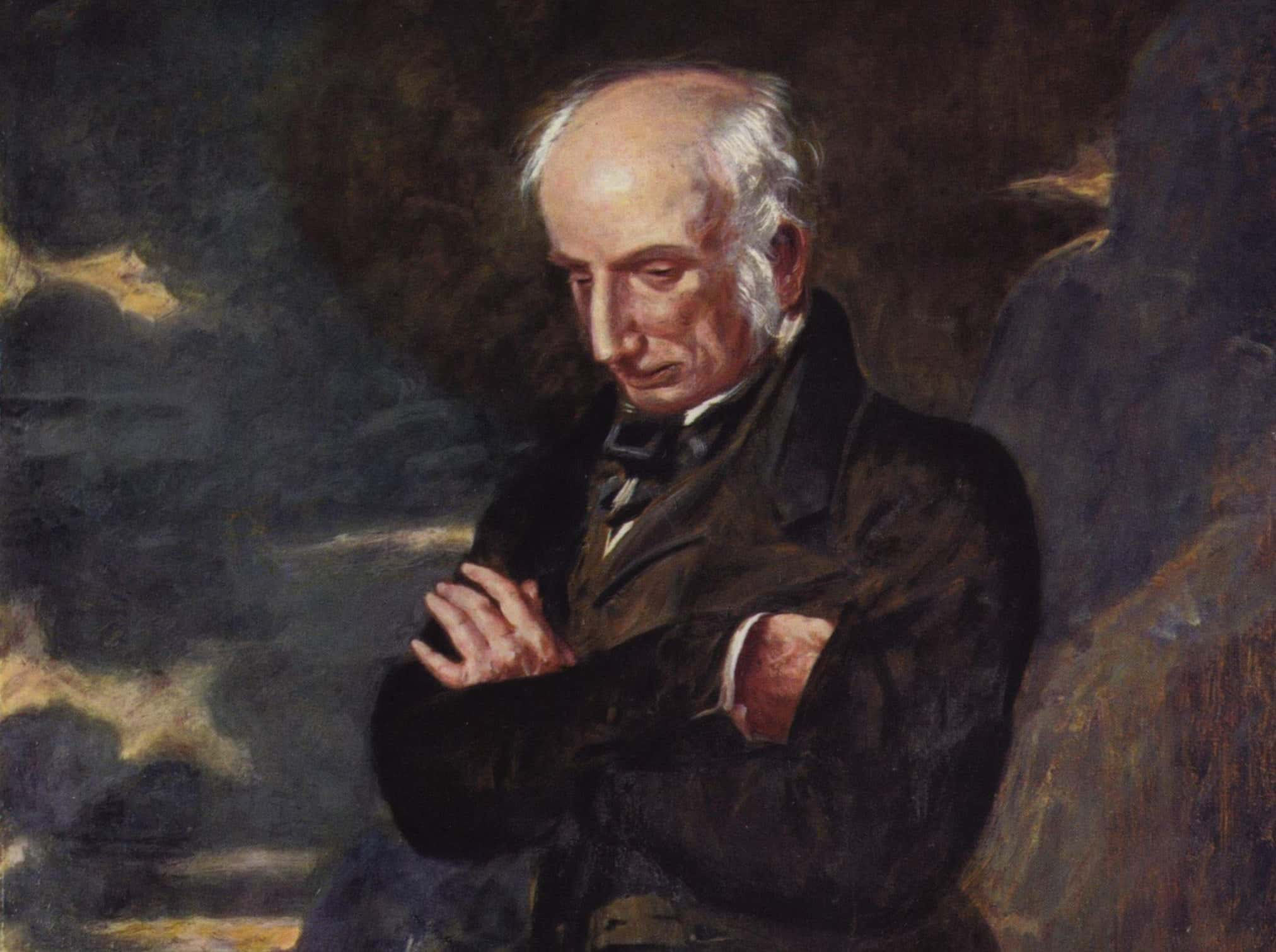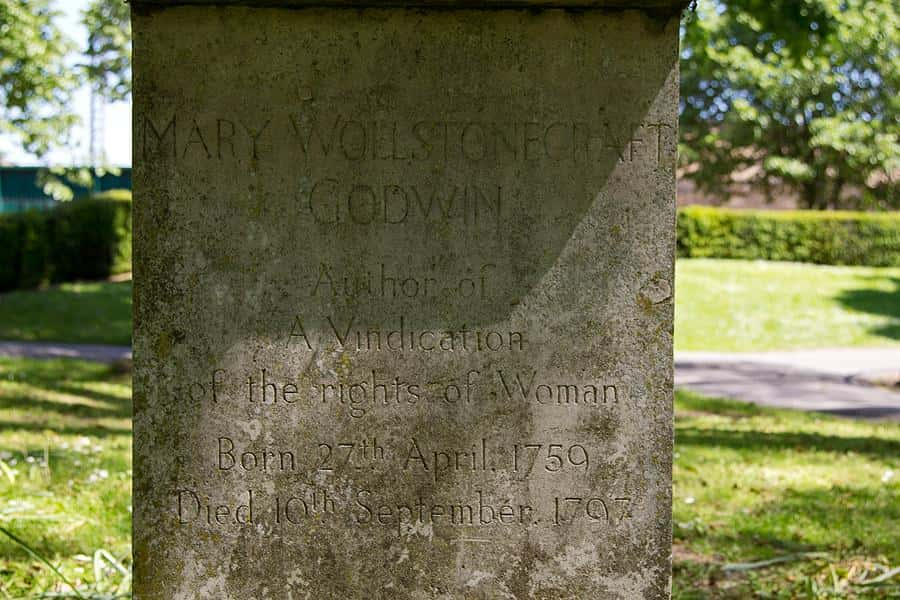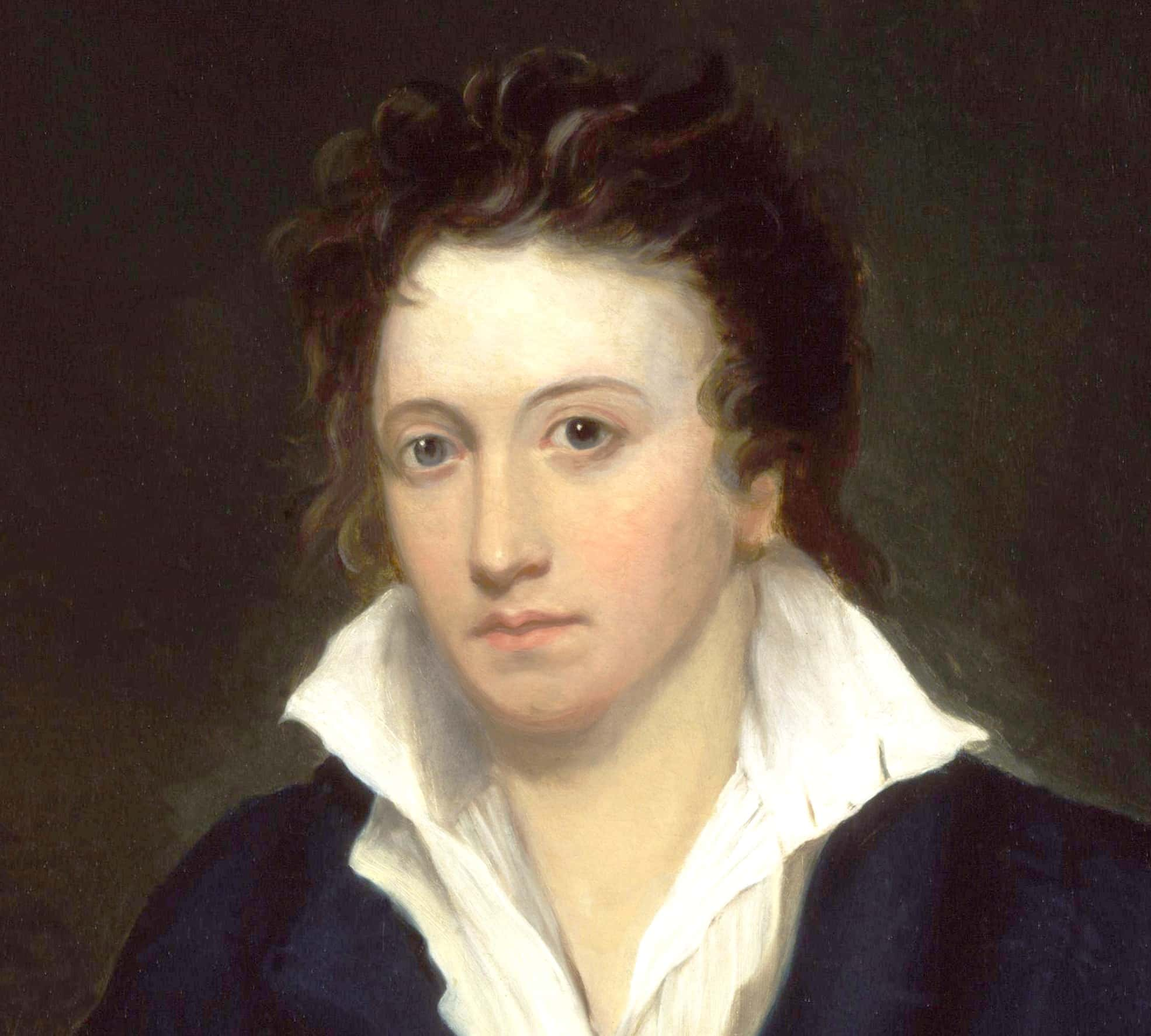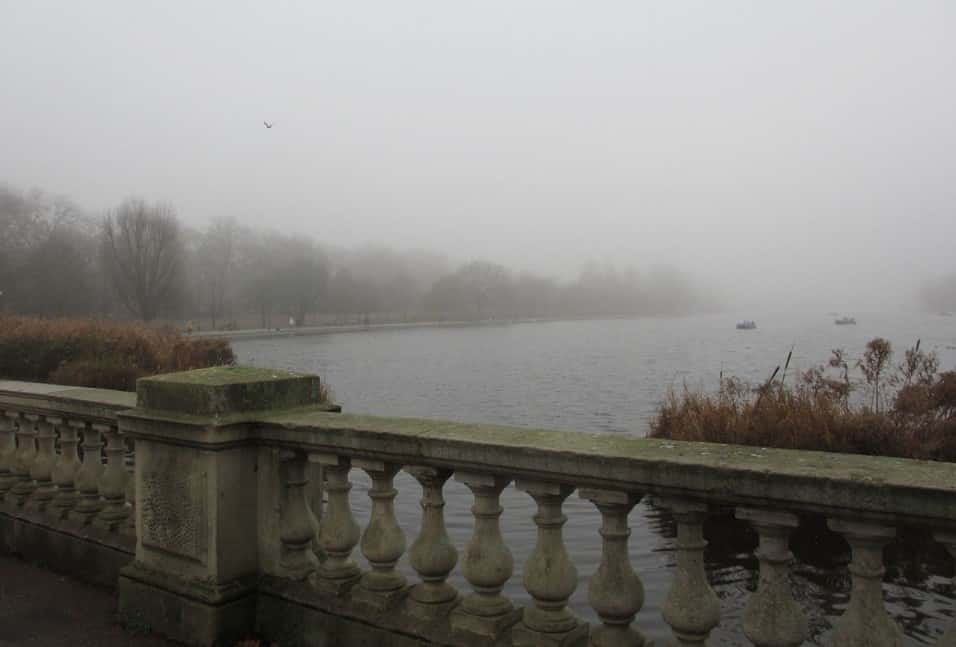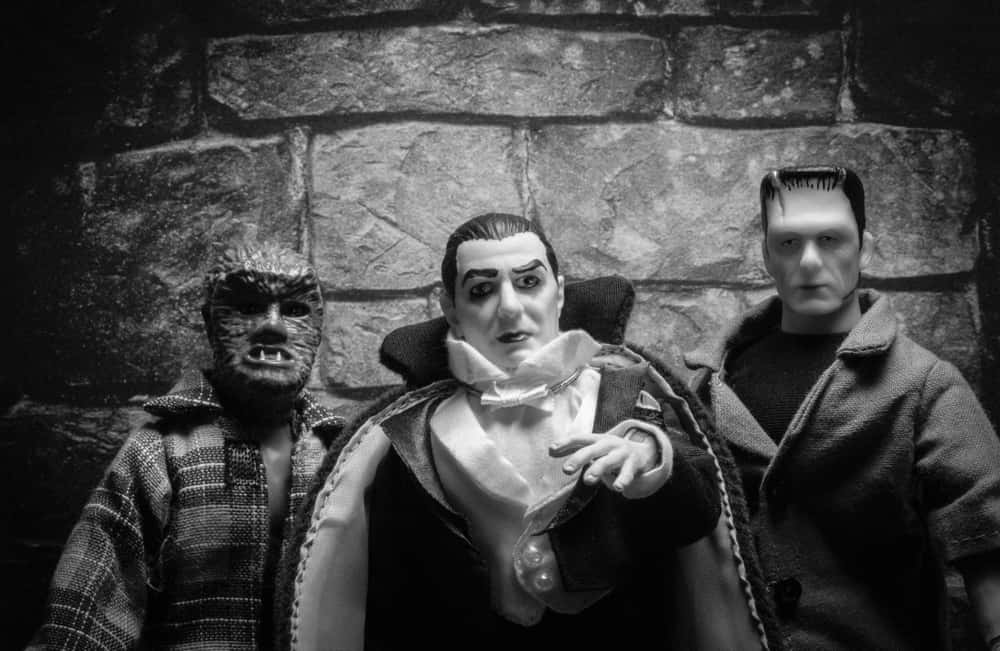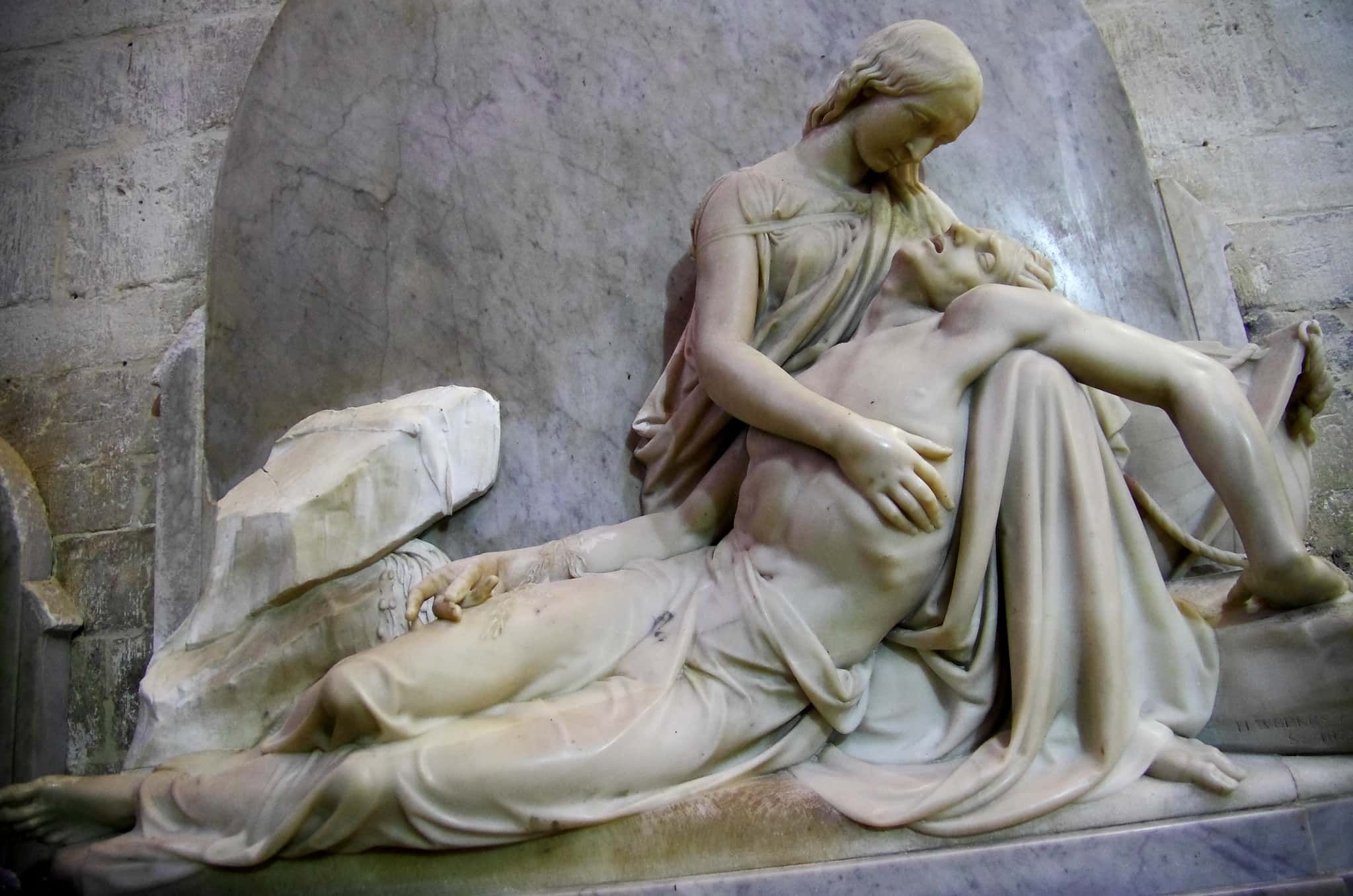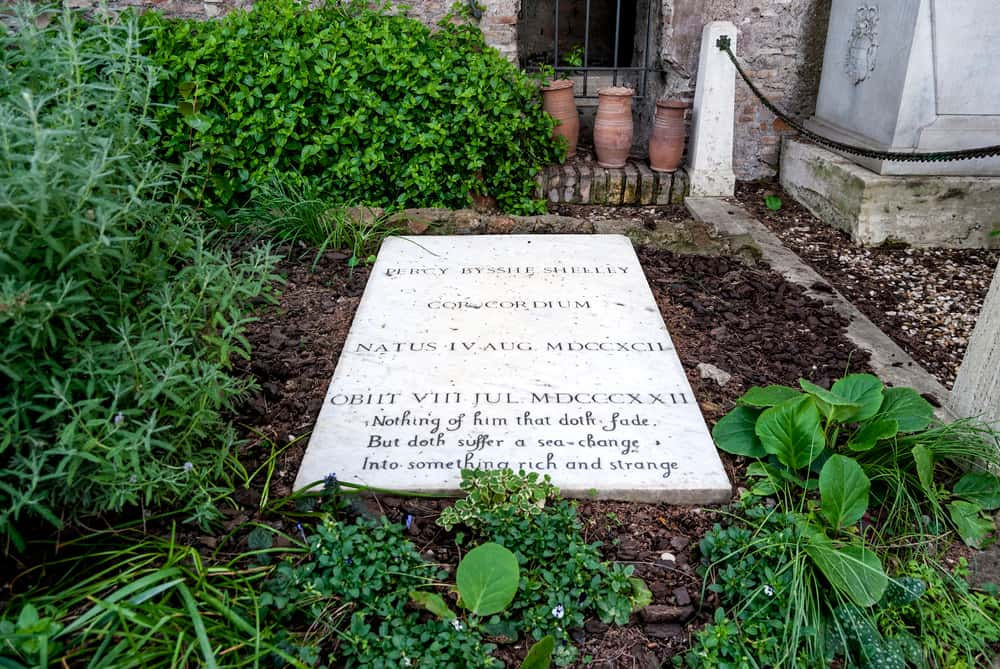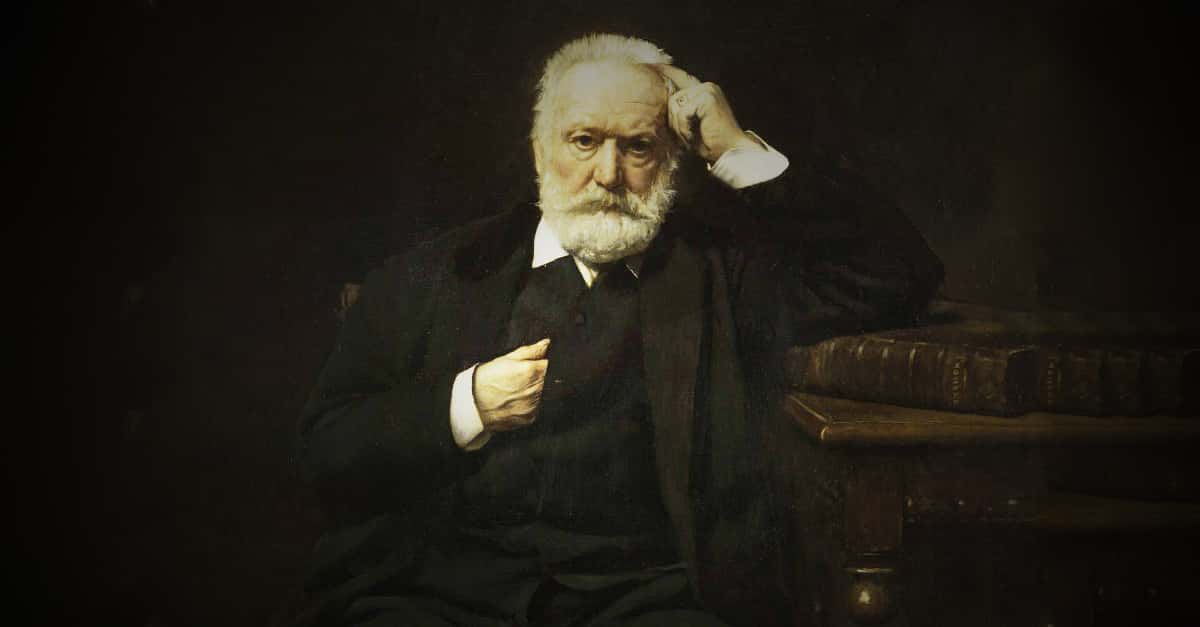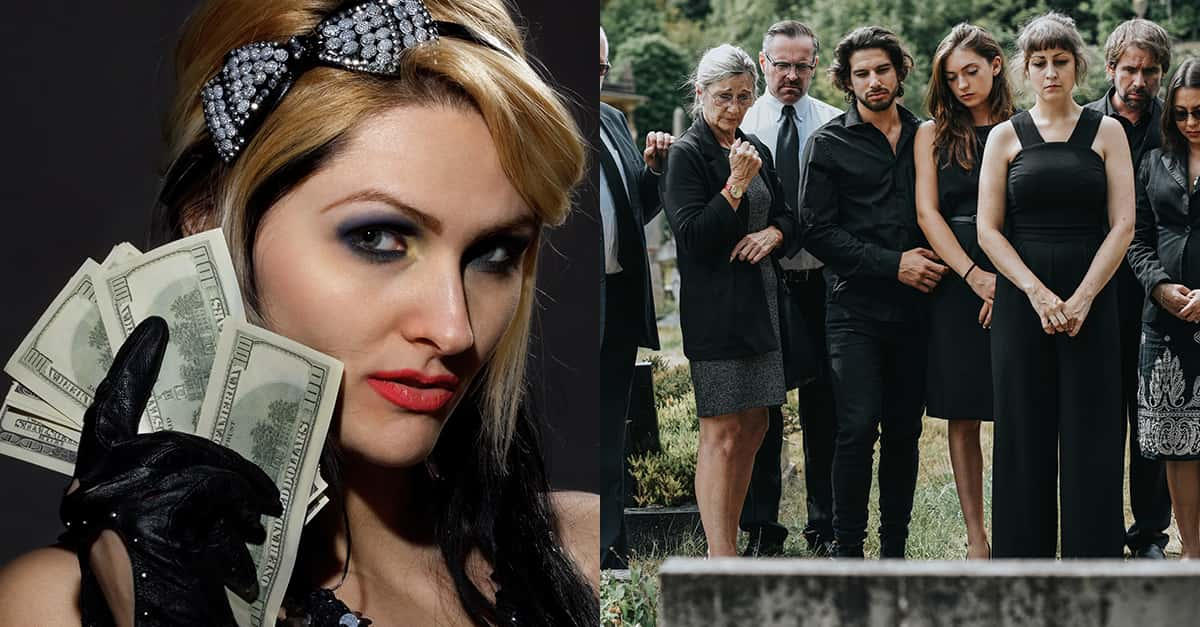“My dreams were all my own; I accounted for them to nobody; they were my refuge when annoyed—my dearest pleasure when free.”— Mary Shelley
Mary Wollstonecraft Shelley was the daughter of Mary Wollstonecraft, an early warrior for women's rights in English society, and philosopher William Goodwin. Shelley went on to make a name from herself beyond her famous parents, and is of course best known for her gothic horror novel Frankenstein: or, The Modern Prometheus. She was also married to the romantic poet and philosopher Percy Bysshe Shelley and helped him edit and publish his works. On January 1, 2018, Frankenstein celebrated its bicentennial, and continues to influence on all facets of pop culture today. Below are 43 gothic facts about the famous writer who, as a teenager, forever changed the world of horror.
Mary Shelley Facts
43. Unsex'd Females
In 1798, Richard Polwhele published a poem titled The Unsex’d Female that was basically a direct jab at Shelley's mother, Mary Wollstonecraft, and her writings. Polwhele had clear ideas about the place of women society, and any woman who as he described was “proudly defiant” was basically immoral and disobedient, unlike so-called "good women" who adhere to the moral standards of the time. Bad women are basically Mary Wollstonecraft, whom he saw as unsexed or un-feminine. The joke ended up being on him. Mary Wollstonecraft is remembered today as an icon. Who's ever heard of Richard Polwhele?
42. Reputation Killer
When a postpartum infection killed Mary Wollstonecraft shortly after Shelley's birth, Godwin wrote and published her biography, unaware of what that would do to her reputation. The revelation of her unconventional beliefs ended up causing a huge scandal, and totally destroyed her name. Horace Walpole referred to her as a “hyena in petticoats” and her friends stayed conspicuously silent. While modern society generally looks at her in a more favorable light, for well over 100 years her name, sadly, was mud.
41. A Recurring Theme
Drownings played a big part in Shelley’s life. Her mother once tried to drown herself in the Thames river, but was rescued by a passerby. Husband Percy’s first wife Harriet was involved in a drowning and Percy himself ended up drowning while on a sailing trip in the Mediterranean. Was it coincidence? Black magic? Could people back then not swim? We'll never know.
40. The Stuff of Nightmares
Mary Shelley’s inspiration for Frankenstein came to her in a nightmare. She and her friends had been discussing Galvanism (the occurrence where muscles twitch and move when zapped with electricity) and her subconscious turned it into a vivid nightmare where Shelley saw a manufactured corpse on the ground coming to life. She tried all night to push the dream from her mind, but she eventually realized “what terrified me will terrify others.” Boy was she ever right!
39. The House Built for Mary
Unlike his father, Mary and Percy’s surviving son Percy Florence was a pretty respectable guy, and he and his wife Jane took care of Mary until her death. In 1849 he bought some land in Bournemouth because he’d been told that the warmer climate would be good for his wife and for Mary, who was already ill. He started building in Boscombe in 1849, but the house sadly wasn’t ready to live in until after Mary’s death in 1851. Though she never got to live in the house, one of her final requests before she died was to be buried in Bournemouth with her parents. When you consider that they were already buried, in London, granting that wish was easier said than done, but it was made so.
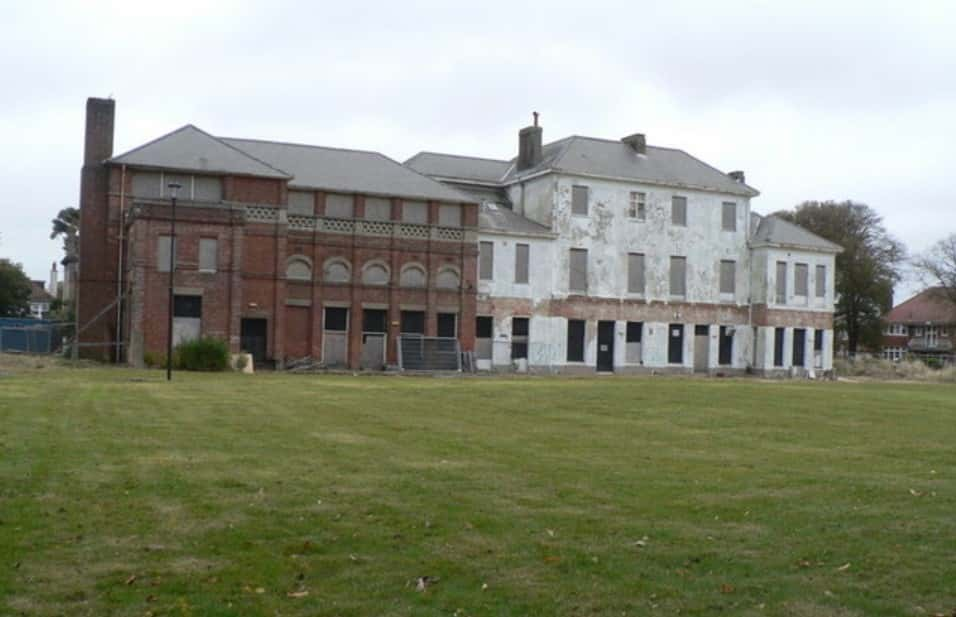 Wikimedia Commons
Wikimedia Commons
38. For the Sake of the Baby
Prior to hooking up with William Godwin, Mary Wollstonecraft had a passionate affair with the liberal author and speculator Gilbert Imlay, which resulted in her first child Fanny. When war broke out between England and France, to protect the baby, she was forced to move to a small village and pose as Imlay’s wife while he was away. Unfortunately for Wollstonecraft, the affair never got going again, and she ended up alone with the baby. A few years later, she had an affair with William Godwin, and once again found herself pregnant. Although neither of them was big into the idea of marriage, they agreed to get married so that the baby wouldn’t have the stigma of being illegitimate. It wasn’t the most romantic relationship, but at least he respected her mind and her writing, which is more than I can say of a lot of marriages.
37. A Poet of Her Own
Shelley’s step-sister Claire Clairmont (née Clara Mary Jane Clairmont) had an even more scandalous life. Clairmont was big into romantic works and desperately wanted to have the same kind of romantic life that she perceived Mary to have with Percy Shelley. She began writing highly emotional letters to the poet Lord Byron (which was totally not unusual for a teen), and basically threw herself at him until he finally slept with her. While she was traveling through Europe with Percy and Mary, she convinced them to follow Byron to Geneva, where the famous Frankenstein story was written. After a summer of love, Byron managed to get Clairmont pregnant, before dumping her soon after the baby was born. Although things didn’t really work out for her, if she hadn’t been introduced to him, Frankenstein might never have been written, so there’s that.
36. Over the Edge
The deaths of her children Clara and William in Italy drove Shelley to a nervous breakdown in 1819. As if having lost three children (her first child was born two months premature and didn't survive) wasn’t enough to drive anybody over the edge, just three years later she not only had a miscarriage, but she lost her husband too when he accidentally drowned. With all of that tragedy, it’s a miracle she was still able to stand, let alone write!
35. Not As Long As I Live!
In 1824, after Percy’s death, Shelley started editing a book of his poems with plans to publish them, but her father-in-law forced her to stop, threatening to cut off his support unless she promised never to publish anything of his son’s while he was still alive. About 15 years later he finally changed his mind, but she still wasn’t allowed to include any of Percy’s memoirs. Talk about hardball!

Sign up to our newsletter.
History’s most fascinating stories and darkest secrets, delivered to your inbox daily. Making distraction rewarding since 2017.
34. Carving Out a Living
The death of Percy Shelley in 1822 left Mary with one surviving child to support and little means to do so. She made the almost unheard of choice (for a woman of the time) to support herself as a writer, and ended up writing several short stories and novels before her death in 1851. None were as successful as Frankenstein, but hey—it’s a living!
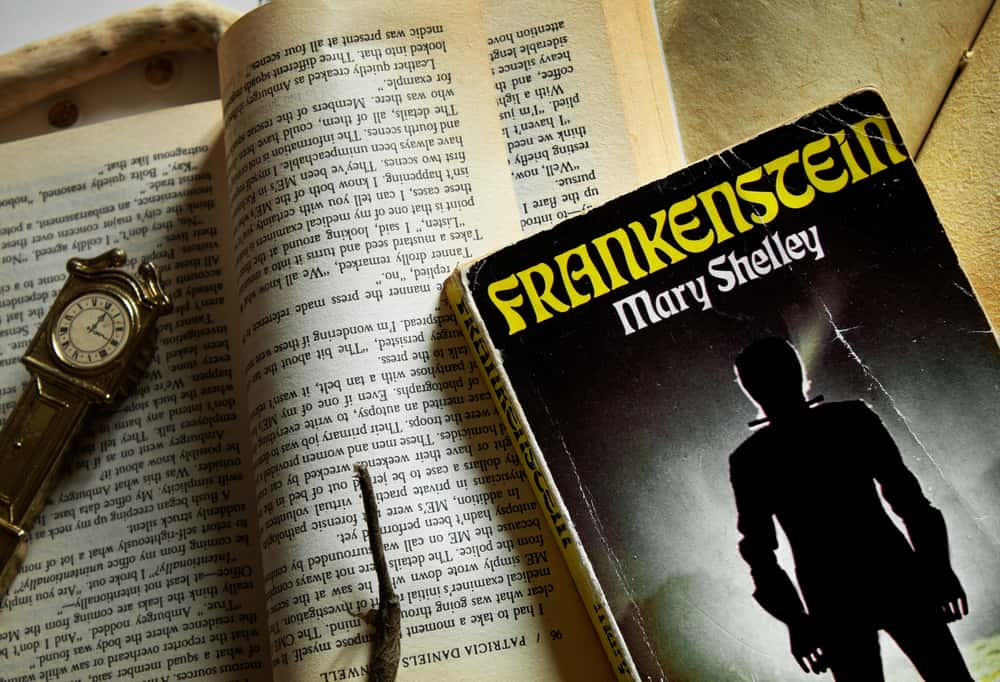 Shutterstock
Shutterstock
33. Fleeing England
When Mary and Percy married, Percy’s ex-wife Harriet had already given birth to two children. Upon her death, the family brought a lawsuit against Percy to cut him out of their lives and take full custody. The suit was successful, and the Shelleys decided that it was a sign that they would never get a fair shake in England. On March 12, 1818, Mary, Percy, their two children, her stepsister Claire, and Claire’s daughter by Lord Byron, took off to Italy for a fresh start. By all accounts, it didn't go so well.
32. In the Movies
In the 2017 biopic Mary Shelley, Elle Fanning stars as the authoress herself, recounting her relationship and marriage to Percy Bysshe Shelley and the night that Frankenstein was born. Directed by Saudi Arabia’s first female filmmaker, Haifaa al-Mansour, the movie offers an illuminating portrait of the original Goth Girl. A second biopic, starring Sophie Turner as a slightly older Shelley, with more focus on Frankenstein, was announced in 2014, but has yet to find an official release date. The National Geographic television network has also announced Shelley as the subject of the third season of its biographical series Genius. How do you prefer your Mary?
31. She Didn't Write That!
When Frankenstein was first published, Shelley’s name wasn’t on it. It was published as Anonymous, but was dedicated to Mary’s father and had a preface by Percy Shelley. People put what they thought were two and two together, and concluded that Percy Shelley was the anonymous author. In 1823, the book was republished with Mary Shelley as the author, but to this day, some people still don’t believe that she could have written it.
30. Free Reign
The one big detail that Shelley left out of Frankenstien was the actual moment of the monster’s creation. She does mention Victor’s interest in electricity but she doesn’t say what he did to create the monster. This vagueness has allowed countless filmmakers to imagine the event however they want ranging from the grotesque to comedic. I wonder which version she would have liked best?
29. Seed of an Idea
With the success of the Boris Karloff film version of Frankenstein in 1931, the studio quickly decided to produce a sequel called The Bride of Frankenstein. In the sequel, Victor Frankenstein creates a bride for the monster, an idea which Shelley actually had all those years ago. Obviously she wasn’t alive anymore to write the screenplay (or to even know what movies were), but the idea of the monster wanting female companionship was mentioned in the book.
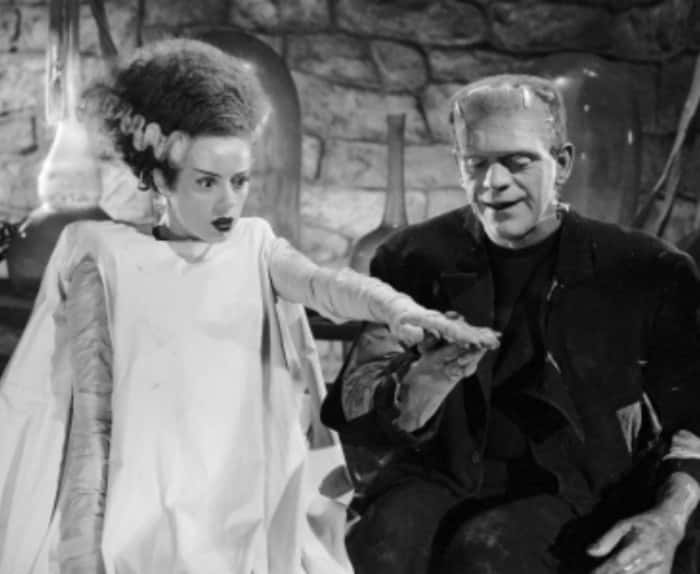 Wikimedia Commons
Wikimedia Commons
28. Mother of Genres
Mary Shelley’s Frankenstein is widely referred to as the first science fiction novel, and she's credited with originating the popular mad-scientist trope that's common in movies and television today. Frankenstein was also responsible for laying the groundwork for the evolution of the horror genre. There is still some debate in literary circles as to which genre it fits into, but considering that Shelley wrote it as a horror story, I’d probably go with that one.
27. Target for Blackmail
In the 1840s, Mary Shelley was blackmailed three separate times. The first threat came from a man named Gatteschi whom she had met in Paris. He threatened to publish letters that she had sent him, but she quickly took care of that problem. Her son got his friend to bribe a police chief into taking all of Gatteschi’s papers, including the letters, which she then destroyed. The second incident involved a man who called himself G. Byron and claimed to be the illegitimate son of Lord Byron. The letters in his possession were between her and her late husband, so she took care of that problem by buying them back. The final incident was from her husband’s cousin who claimed to have written an unflattering biography of Percy Shelley but for 250 pounds he wouldn’t publish it. Enough was enough and Shelley refused. Lucky for her, photocopiers hadn’t been invented yet.
26. Lone Survivor
Shelley’s novel The Last Man is not nearly as well-known as Frankenstein, but it’s equally significant. It’s an apocalyptic story of a future world that has been devastated by a plague and leaving just one human survivor. Books like I Am Legend and The Road are in the vein of Last Man, but ironically, reviewers called it “sickening” and said Shelley had a “diseased imagination.” Shelley called it one of her favorite works, and the genre has proved enduringly popular, so what did they know?
25. Totally Slammed
When Frankenstein was first published, the critics absolutely hated it. In fact, one critic called it “a tissue of horrible and disgusting absurdity.” Luckily for Shelley, the critical opinion had no impact on the popularity of the book, and thanks to a surge in the popularity of Gothic fiction at the time, it became a bestseller. It also didn’t hurt that, in 1823, a play version of the book called Presumption; or The Fate of Frankenstein was produced, making the story even more popular.
24. Contributing Factor
Shelley was just 17 when she gave birth to her first child. The baby died six weeks after it was born and Shelley wrote in her journal about dreams where the baby came back to life. Frankenstein was written just two years later, and many think that the baby’s death helped her come up with the idea. Talk about something positive coming from tragedy!
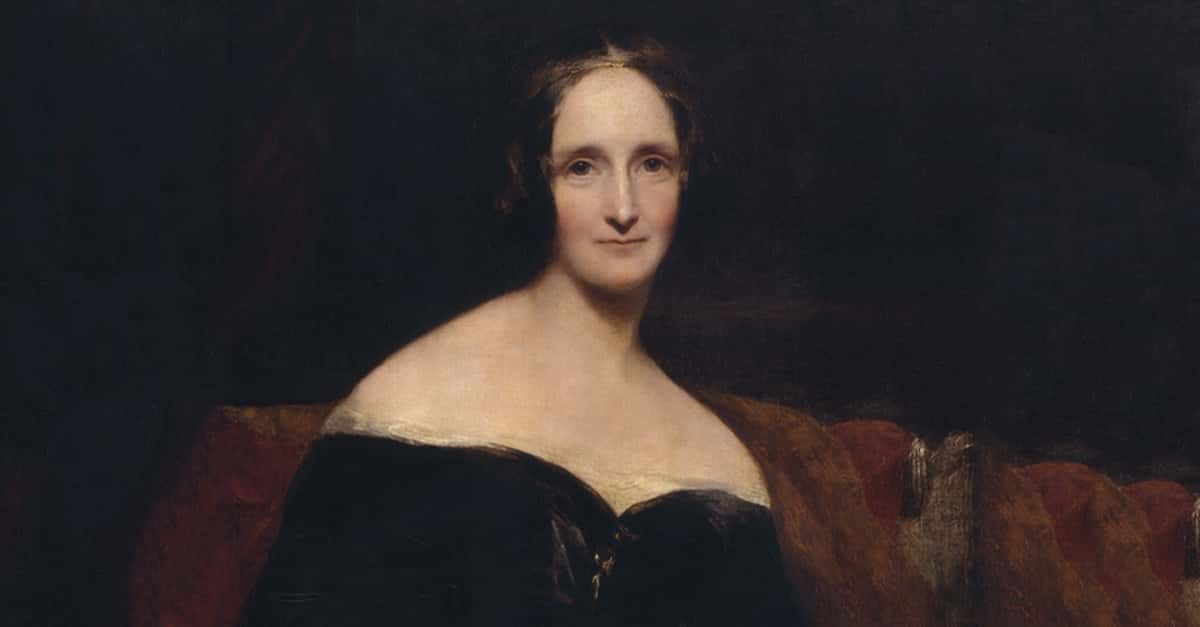 Wikimedia Commons
Wikimedia Commons
23. Pawn of Fate
The version of Frankenstein that we all know and love is not the original version that Shelley came up with. She revised the novel multiple times, including in 1831 after the death of two of her children and Percy. In the revised version, she explores the idea of free will vs. fate and destiny, and portrays Dr. Frankenstein as fate’s victim rather than a man of free will. With all of the tragedy surrounding her, she apparently saw herself as a pawn of fate. It certainly gives meaning to the phrase “fate is a cruel mistress,” as it's hard to argue that fate wasn't cruel to her!
22. Sweetly, Sweetly Blew The Breeze, On Me Alone It Blew
When Shelley was a child, she once heard Samuel Taylor Coleridge recite his poem Rime of the Ancient Mariner while hiding behind the sofa in her family’s living room. The reason for her hiding had nothing to do with the poet or the poem—it was simply because she was supposed to be in bed! Shelley never forgot the poem and there were several allusions to it in Frankenstein.
21. A Scarlet M
London society didn’t take too well to Mary Shelley’s relationship with Percy. London was quite conservative, and their relationship was totally taboo. Their ideas about free love also didn’t help any. When she returned to England after his death, despite being a successful author, her bad reputation stuck with her. They might as well have branded her with a scarlet letter!
20. Just a Few Scribbles
From the time she was little, Shelley enjoyed writing stories and, luckily for her, her father and stepmother just happened to own a publishing company. In 1808 she published her first poem, Mousneer Nongotonpaw, which was 39 quatrain re-working of a song by Charles Dibdin. Who would have imagined that a little more than ten years later she would publish a book that would endure for 200 years?
19. Getting Some Distance
In 1812, Shelley was recovering from illness and her doctor suggested she take a break from London, so her father sent her to Scotland to stay with his acquaintance William Baxter and his family. She ended up staying there for two years and it gave Shelley her first taste of real freedom. Her stay had such an impact on her that when she wrote Frankenstein, she mentioned the cottage where the Baxters lived. Talk about impressionable!
 Wikipedia
Wikipedia
18. No Help There
Shelley’s husband Percy was the eldest son of a Baron, Sir Timothy Shelley, and as a result was not only heir to a fortune but also received a generous allowance for him and Mary to live on. That changed when Shelley drowned. After his death, Shelley wrote to her father-in-law asking him for financial help, but as far as he was concerned, his estrangement from Percy was Mary’s fault and he refused to help her except for some support for her son—and even still there were conditions. Shelley at the time also had a son by his first wife who would have been the new official heir, so she didn’t even have that to bargain with. Technically, Sir Timothy had no legal reason to support either of them, but it was still pretty cruel of him to refuse. It's not like he was strapped for cash.
17. A Little Crowded in There
After Shelley’s death in 1851 from an apparent brain tumor, she was buried with her mother and father in a vault in Bournemouth. Upon their deaths, her one surviving son, Percy (seriously, how many Percys and Marys are in this story?!) and his wife Jane were also buried there, as was the heart of husband Percy Bysshe Shelley.
16. That Was Me!
In an early review of Frankenstein, Sir Walter Scott wrote favorably of the novel, stating that “The author seems to us to disclose uncommon powers of poetic imagination.” Since the novel was published anonymously, he, like most of the world, assumed that it had been written by Shelley’s husband Percy. Not one to let that slide, she immediately wrote a letter to Scott correcting the mistake. She told him “I am anxious to prevent your continuing in the mistake of supposing Mr. Shelley guilty of a juvenile attempt of mine.” In doing so, she outed herself as the author of her work under the pretense of self-degradation. Clever!
15. Teenage Queen
Mary Shelley started writing Frankenstein when she was just 18 years old, and was 20 when it was published. The fact that she was a girl with very little formal education made this an even bigger accomplishment. And who says teenagers are lazy?
14. CinderMary
When Shelley’s father remarried in 1801, his new wife Mary Jane Clairmont brought with her two children from her previous marriage. Shelley and her stepmom didn’t really care for one another, and while Shelley didn’t quite have to live a life of servitude, à la Cinderella, she thought Clairmont was devious and manipulative, and blamed her for pushing her father away from her. For her part, Clairmont did nothing to encourage Shelley’s curiosity and was said to favor her own children.
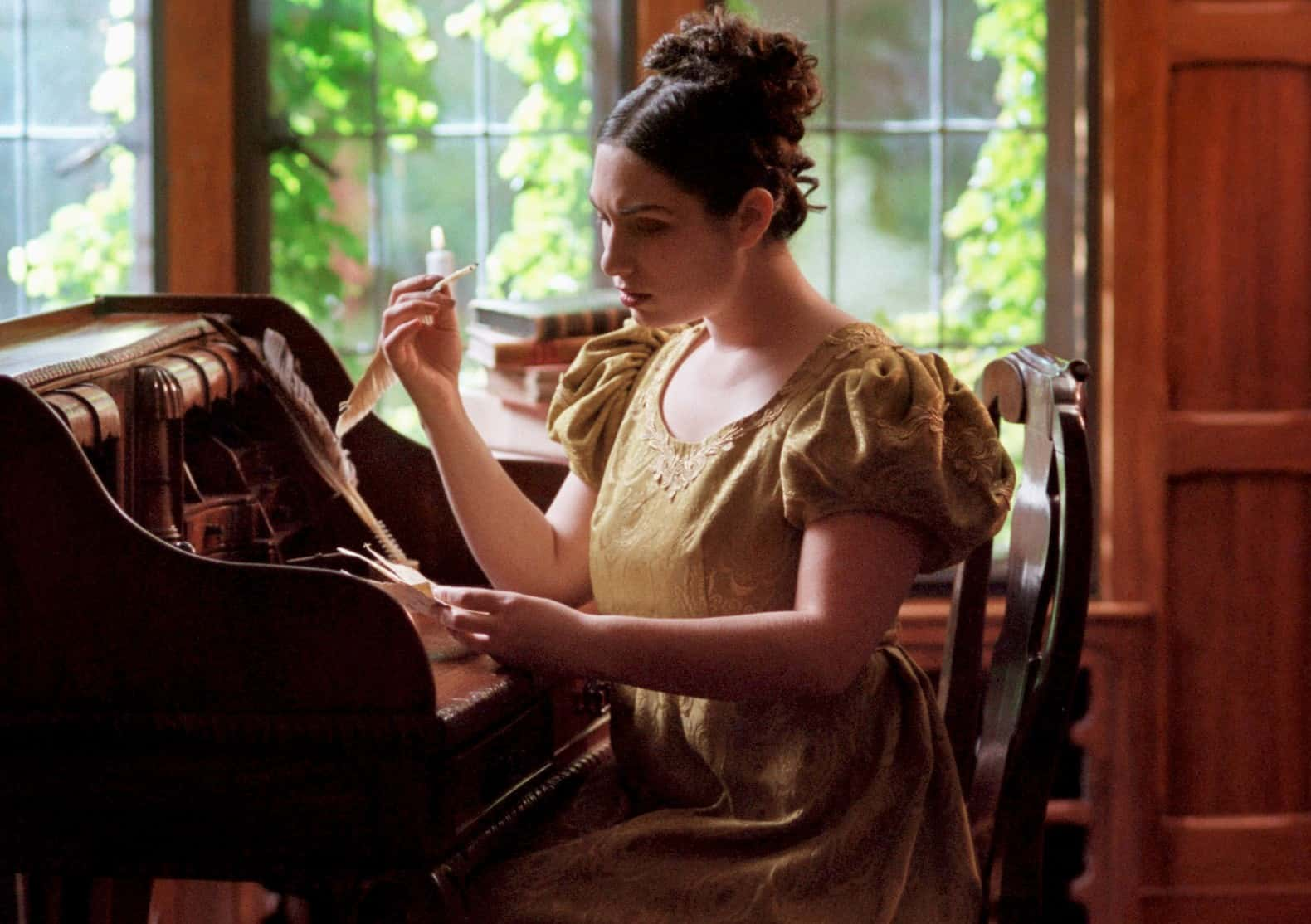 Getty Images
Getty Images
13. The Original Feminist
Mary Shelley’s mother Mary Wollstonecraft was a feminist long before there was even a word for it. Like her famous daughter, she was a writer, and her most famous work, A Vindication of the Rights of Woman, advocated for the rights of women and got her branded as a prostitute. Her mother died of a fever just ten days after Shelley was born, but she definitely inherited her free-thinking spirit.
12. Keeping Good Company
Because of who her parents were, there were always prominent writers, thinkers and poets visiting Shelley's home. While she did not receive a traditional education, she was allowed to sit and listen to her father’s discussions with poets like William Wordsworth, Samuel Taylor Coleridge and Charles and Mary Lamb. Obviously, she picked up a few things!
11. Book Smarts
Shelley’s father William Godwin was a philosopher and political writer, which meant that he had a pretty good library. And what does a young girl with a lot of time on her hands do? If you’re Mary Shelley, you make use of all of those books and read! Shelley was quite a bookworm and would read by her mother’s grave. She also had an active imagination, and daydreaming offered her an escape from her unpleasant environment. Who says you have to go to school to get an education? But I guess young Shelley didn't have YouTube and Facebook to endlessly fill her time, so what else could she do?
10. Cemetery Sex
When Shelley was a child, she learned to write by tracing the letters on her mother’s headstone. When she was a teenager, she allegedly popped her cherry with future husband Percy Bysshe Shelley on her mother’s grave. You go girl!
9. I Wash My Hands of You
At age 16, Shelley met the poet Percy Bysshe Shelley, who was 22 and married at the time (albeit unhappily). The pair fell in love and, with no thought to the consequences, they ran off to Europe with her stepsister Clare. When she came home pregnant, it infuriated her father to the point of disowning her for a time.
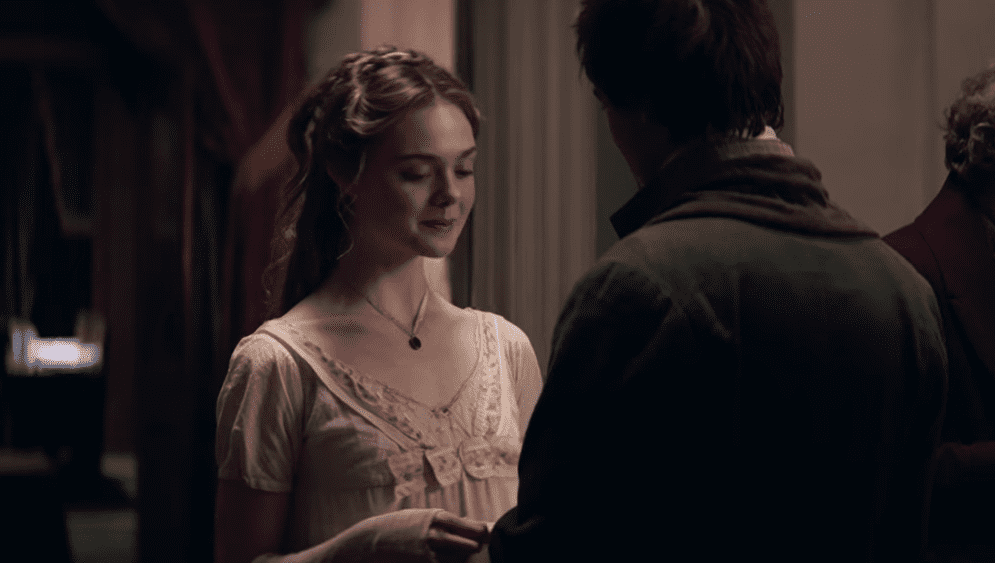 Mary Shelley (2017), BFI
Mary Shelley (2017), BFI
8. Free Love
Percy Shelley wasn’t exactly the pillar of moral society, and luckily for him, this was one thing that he shared with his future wife. She was a big believer in sexual freedom and agreed with his views on free love. It didn’t bother her at all that she was the other woman, and he was totally fine with her flirting with his best friend, Thomas Hogg. It’s also possible that Percy had an affair with Mary’s stepsister Clare, but it’s never been proven. Boy were they in the wrong century!
7. Suspicious Circumstances
Though Mary and Percy Bysshe Shelley are seen as an iconic couple nowadays, their love at a hugely dark side. When Percy met Mary, he was already married to Harriet Westbrook. After Percy went off with Mary, Harriet's pregnant body was found floating in the Serpentine in Hyde Park, London, in 1816. She had apparently drowned herself. Harriet's death freed him up to marry the (also) pregnant Mary, but the circumstances of his wife's suicide were a little dicey. There was some speculation that Mary’s father had Harriet Shelley killed so that Mary’s child wouldn’t be born a bastard, but she was probably just really unhappy at being abandoned. Wouldn’t you be?
6. Unrequited Love
This wasn't the only life their love destroyed. Shelley’s older half-sister Fanny Imlay was the first of the sisters to meet Percy Shelley, and was rumored to have fallen in love with him first. Later that year, Godwin sent Fanny to Wales, possibly in an attempt to keep her apart from Percy. In 1816 (the same year Harriet died), she committed suicide by overdosing on laudanum (a syrup made of opium). Many biographers have speculated that she was still in love with Percy Shelley and killed herself because she could no longer handle his rejection, not to mention the fact that he was beginning a relationship with her own sister. Definitely a romantic story, but still incredibly tragic.
5. Challenge of a Lifetime
As the story goes, Frankenstein was written on a challenge. One summer, while visiting Lord Byron at his villa near Lake Geneva, the group read each other ghost stories from the book Fantasmagoria to entertain themselves. Byron suggested that they have a competition to see who could dream up the best scary story. Mary ended up winning the contest, but Byron’s other guest, physician John Polidori, ended up writing The Vampyre which is said to have influenced Bram Stoker’s novel Dracula.
4. Daddy Issues
Shelley and her father William Godwin had a difficult relationship. He was cruel, selfish and distant from Shelley, and he threatened that he wouldn't love her if she didn’t convince her husband to give him more money. When she wrote to him about the death of her son William, he responded callously and without sympathy. Despite his being a, let's face it, pretty crap father to her, she continued to be devoted to him. Her novel Mathilda, about a father who holds incestuous feelings for his daughter, was published after his death, and was written as an expression of those complicated feelings and her repressed fantasies. Freud would have had a blast with this one.
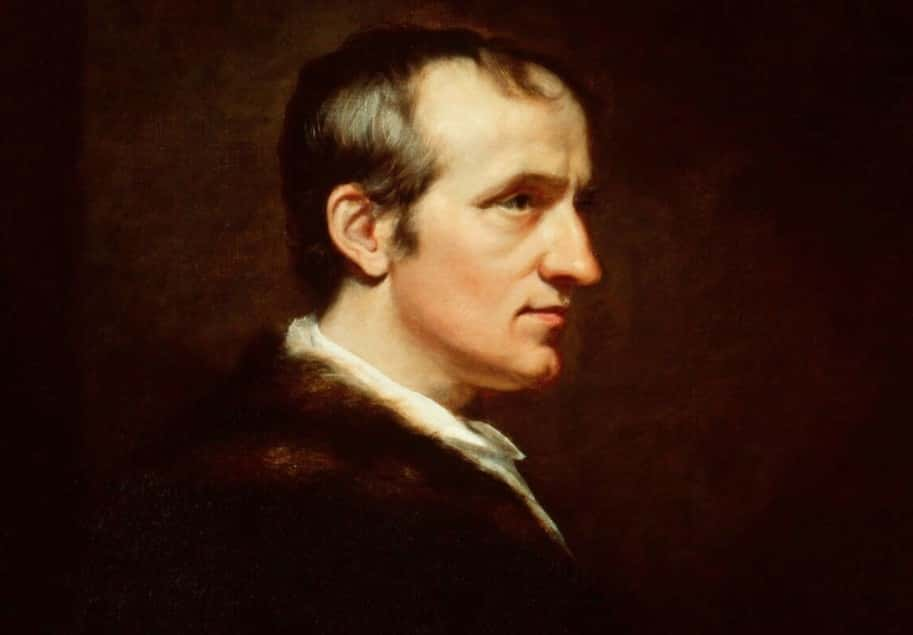 Wikimedia Commons
Wikimedia Commons
3. The Real Doctor Frankenstein
Frankenstein wasn’t just a name that Shelley pulled out of thin air. There was a Frankenstein castle in Germany that was home to the alchemist Johann Conrad Dippel. It was rumoured that science experiments had taken place at the castle, and Shelley had at least traveled near the castle and would have been familiar with the rumors. Dippel is believed to be the inspiration behind the Dr. Frankenstein character.
2. Macabre Keepsake
Shelley was just 24 when her husband Percy died from drowning, and she kept an unusual keepsake to remember him by. When the body was cremated, everything burned except for his heart, which had calcified. Instead of burying it, she wrapped the heart in a silken shroud, and supposedly carried it with her almost everywhere she went. One year after her death, the heart was found in her desk wrapped in the pages of one of Percy’s final poems. Totally creepy, but also romantic. Most people don’t literally carry their spouse’s heart with them!
1. Accident or Murder?
Percy Shelley’s death by drowning has always been considered somewhat suspicious. Some people close to Shelley argued that he was depressed and that his death may not have been accidental. There are even theories that Shelley was murdered for political gain. Shelly was no angel: He was always in debt, and his philandering reputation didn’t exactly make him a beloved public figure. There was also the little problem that he was an outspoken atheist. He was so disliked in some sectors that it wasn’t impossible to believe that either an angry creditor killed him, or that someone else plotted to assassinate him. Was it foul play or just an unfortunate accident? You decide!
Sources: 1, 2, 3, 4, 5, 6, 7, 8, 9, 10, 11, 12, 13, 14, 15, 16, 17, 18, 19, 20, 21, 22, 23, 24, 25, 26, 27, 28, 29, 30, 31, 32, 33, 34, 35, 36


